Nylon 70D, MTN 1.2, HyperD 1.6, Monolite 1.0, AIRWAWE 1.8… or Cloud 71? Yes, even that can be dealt with when one wants to choose the most suitable hamaka exactly according to one's subjective requirements.
Photograph: author’s archive. Dutchware and Lesovik (@HopelessOutdoor, @bushcraft_jack, @coffeeteatrip, @naspacer, @troj3x) contributed, to which we aereby thank you for your trust.
From time to time, an already complex choice will be made more difficult by one of the manufacturers by introducing a product that will humble the limits of the previous one, which was on display only yesterday. A recent example is Cloud 71, from the American cottage company Dutchware, which, using this fabric, guarantees an unprecedented weight of 368g on its 11-foot Chameleon hammocks and that – beware! – includes a mosquito net!
There’s nothing wrong with saying a few general rules that can make your choice of hammock a lot easier. What particular brand you choose will ultimately be up to you and your preferences, as there are many manufacturers operating in the market. Most of them will offer you several color combinations, and some of them will give you different lengths, widths, cuts, materials. Count on paying more where you get more choice. But it’s a question of what ends up being more expensive, one well-crafted hammock to measure, or more purchases of different hammocks as you gradually figure out what actually works for you.
Consider, measure, and consider how you want to use the hammock
When choosing a hammock, your body weight, height, body type, laterality, and ultimately how you want to use the hammock should be among the basic input data to help you identify and build the ideal set-up. And think at the outset about how often you want to sleep in a hammock, and whether you want to travel with a hammock year-round. If you drive a hammock often, including during the winter, then you will need a very variable system where you will change the components according to the current situation. The weight of such a variable set in the summer will be in the range of 1.8-3 kg (hammocks, suspension, underquilt, topquilt, tarp), while by winter it will probably be in the range of 2.5-3.5 kg (in our mild Central European conditions). You will most likely reach for the middle and upper classes hammock, or the best available on the market. But if you travel with a hammock only a few times per year, and not at all in winter, then lower-class hammock, at most middle-class, will most likely suffice.
Finding balance in length and breadth is like seeking the Holy Grail
Hammocks are produced in most cases, ranging in length from 270 cm (9 feet) to 335 cm (11 ft). But, of course, there will be exceptions, shorter and longer. Essentially, the longer and wider the hammock, the more comfortable it will be for you, allowing you to sleep more diagonally, partly eliminating the negatives of hammock sagging. With a hammock too short, you lose that advantage, such a hammock will force you to sleep on the suspension axis, and your body will follow the arc of the sag. And that’s not pleasant at all. The diagonal encampment is shown in the following photos.
Hammock widths range from 140-150 cm. Why this dimension? The width of the material is limited by the possibilities of the material supplier’s production line. By default, they can reach a width of no more than about 150 cm in one uninterrupted piece. Fortunately, the width is sufficient. But even here there is an exception, and that again is Dutchware, which offers its Chameleon even at 173 cm wide as a so-called width version. But Dutchware argues that a width of 150 cm is ideal for a height of about 180 cm and the wide version is then more suitable for taller and more powerful figures. But the primary source of comfort is mainly the length of the hammock, not its width. However, the wider fabric allows the shorter hammock to provide the same level of comfort as the longer but narrower hammock. There are known cases where many people 190+ cm can sleep comfortably in their 150 cm wide and 330 cm long hammocks. For example, such hammocks need only look to our Polish neighbors. Specifically, the hammock Draka by Polish cottage manufacturer Lesovik is famous for this.
But how do you figure out the ideal dimensions that guarantee you a good night’s sleep? The following simplified rule can help:
Length 9 ft (270 cm) –An ideal diagonal lying at an angle of 5-10° relative to the hammock’s axis, a dimension suitable for smaller figures. In my purely personal opinion, it’s ideal for figures around 5’7″. While manufacturers often say otherwise, a taller person usually doesn’t fit into a hammock ideally and something “sticks out.” This is the most common dimension for the various more affordable manufacturers, such as Amazonas, DD Hammock, Snugpak. Similar manufacturers also often offer a wide variety of custom accessories. These hammocks are at reasonable prices, and for some of them, production is in Asia and quality control is in Europe. They are robust enough for our conditions, and usually some are suitable for good bikepacking. Various supermarket hammocks also fall into this dimension, but they can be hard to find other accessories, but they are enough as an initial entry into the world of hammocking with no further claims.
In the following pictures, you can see a typical representative from DD Hammock, a hammock Frontline in the superlight version (926g – cover, hammock with integrated mosquito net, tree skids, suspension of whoopie slings, DNM superlight carbines). The superlight hammock alone weighs 630 grams. The standard version of the Frontline is then around 1100-1200g depending on the type of suspension used. Of course, I didn’t factor in the weight of the underquilt. You can also judge in a few frames how I fit into the hammock with my six-foot-six. It is only just so much better when sleeping more evenly on the axis. In another slide, I just turned it over to show how you can sleep in this hammock if you want to completely get rid of the mosquito net over your head, which can’t be completely unhooked by this hammock. All you have to do is turn the hammock 180° around the axis to make the mosquito net underneath. But I almost forgot that 9ft hammocks are, of course, ideal for children.
Length 10 ft (300 cm) – The ideal diagonal lying at an angle of 15° relative to the hammock’s axis. In my opinion, this dimension is great for bikepacking, because here you achieve a very good weight-space ratio that takes up in your bags or backpack. The size, in my judgment, will accommodate a comfortable figure of certainly up to six feet. These hammocks are still roomy enough.
Popular among travelers was the asymmetrical hammock Woodsman X by UK Hammocks. Fortunately, we have the very handy and affordable Gold River manufacturer Hammock in the Czech Republic, Gold River in many ways surpasses this famous hammock with its asymmetrical Ranger model. With a width of 150 cm, it compensates for a handicap that is only 280 cm (9.2 ft), but from a comfort point of view, I rank it somewhere between 9-10 ft. The angle of lying between 10-15° relative to the hammocks axis also makes sense. You can see Ranger in the photos below. The Ranger’s weight is 744 g (cover, hammocks with integrated mosquito netting, tree huggers, suspension whoopie slings and toggle – what is toggle and whoopie sling? We will address the hang-up more in one of the next articles).
Lenght 11–12 ft – The ideal diagonal lie at an angle of 20° relative to the hammock’s axis. The height of the figure is almost unlimited (i.e. suitable for a basketball player). The perfect dimension for the moment when you want to stay in one place for a long time and the hammock is your background. Again, this is a sought-after dimension among all travellers. This is a kind of dimensional ethanol that is not lacking in most of the proven manufacturers. If comfort is your criterion, then you certainly won’t miss with that dimension. The hammocks are spacious enough and are often offered in many variations of design. They are produced mainly by cottage manufacturers, who also dictate the direction of the hammocks development. They often use the best materials on the market and can keep the overall weight down to impossible numbers. It certainly includes the US models Dutchware Chameleon, Warbonnet Blackbird XLC, Dream Hammock Sparow RTS, but also the aforementioned Polish hammock Lesovik Draka. There are, of course, longer hammocks on offer, but we are getting to various marginal solutions.
In the slides below, you see the aforementioned Chameleon model from Dutchware, which is known not only for its high comfort, low weight, but especially, at present, probably the most sophisticated system of accessories with which the Chameleon can be modulated for different seasons and natural conditions, including the choice of paint or print material. The founder of the company, whom everyone knows as Dutch, managed to raise enough funds in 2017 on Kikstarter with the help of many donors to launch a company that transformed the world with hammocks products. And, as mentioned in the introduction, their lightest setup at the Chameleon is made of nearly transparent Cloud 71 material, and the weight of the mosquito net hammock alone is a whopping 369g (13oz). Their Netless hammock (no mosquito net) is already a hard-to-believe 133 g (4.7oz).
This adds up to a very interesting parameter to count on when choosing a hammock. When you say laterality, most of us imagine that someone is right- or left-handed. Established hammocks manufacturers, of course, count on this, offering hammocks that are asymmetrical and symmetrical for this reason. This is nothing more than finding out whether you sleep in a hammock with your head on the left/feet on the right relative to the suspension axis, or the other way around, i.e. with your head on the right/feet on the left. If you’re comfortable with both positions, you’re probably one of the few individuals who have cross-laterality. Don’t despair, we have two such individuals in our family. The hammock cut is the same in most cases, because the asymmetrical or symmetrical hammock is made by a mosquito net that is already sewn one way or another. Depending on which one you turn on, you change the hammock to asymmetrical or symmetrical. Once again, an example would be Dutchware, for which you can buy both mosquito nets with a Chameleon, and to make matters worse, you can also turn the asymmetrical mosquito net on “inside out” to get a hammock only for the left-handed or right-handed person. Most manufacturers don’t offer that comfort of choice, because if they already have an integrated mosquito net, it’s not the rule that it can be completely unplugged and you always have to choose a specific model of hammock.
Among the remarkably interesting producers is Warbonnet, which also uses a symetrical hammock cut for the symmetrical and asymmetrical mosquito net. These hammocks are considered by many to be the most comfortable. Hint finally: If you know what laterality you have, then consider buying an asymmetrical hammock. If both sides of the bed suit you, then choose the ideal hammock symmetrical. And how do you tell an asymmetrical hammock from a symmetrical one? Just look at the attached picture. The asymmetric hammock is characterized by the fact that when you turn it on, you see the sides form a cross. Symmetrical, on the other hand, would make a nice half-moon out of a hammock. Of course netless hammock will always be symmetrical in most cases.
If you drive a hammock year-round and only consider one hammock for everything, then I recommend a hammock with a mosquito net. If the mosquito net is integrated, then it would be better to remove it completely. If you worry about weight, then you can only take the hammock itself without the mosquito net. In this respect, netless hammocks are also an excellent choice. These are completely free of mosquito netting. Prepare for mosquitoes if you buy netless hammock only. The weight of netless hammock is mostly in the range between 200-300 g. Also, remember, a mosquito net not only provides protection from mosquitoes, but also increases thermal comfort in colder weather. For this reason, some manufacturers offer hybrid mosquito nets that combine full material with netting.
Ridgeline
And we come to another important part of the selection, which is the ridge rope line that is strung between the two ends of the hammock, English for ridgeline. This line is important for several reasons. The first reason is that, because of the length of the ridgeline, you can affect the sagging of the entire hammock and reduce or increase the comfort of sleeping, and at the same time you also use the ridgeline to fix this setting, so that each time you build the hammock just as much and faster than one that doesn’t have ridgeline. Around 83% of the total length of a hanging hammock is often cited as the ideal length. But, it’s all a little more complicated than that. Keep in mind that a ridgeline of 83% hammock is a good option only if your hammock is at least 1.6 times your height. If this is not adhered to, you will feel uneasy about the hammock. Hammock simply won’t allow you to lie comfortably diagonally. For example, we can once again jump to the Polish Lesovik, which recommends a ridgeline of even 86% of the total hammock length for its Draka hammock.
On hammocks, you will encounter ridgeline at a fixed length or adjustable length. Personally, I recommend adjustable. If you have a classic open hammock that doesn’t have ridgeline but has the optimum length to use ridgeline, then it’s quite worth installing the adjustable ridgeline afterwards. You can make adjustable ridgeline (check Youtube for instructions) or buy it separately from Lesovik, for example.
The other clear advantage of ridgeline is its use as a coatrack. You can hang various organizers, lantern or maybe Hangtime Hook (cell phone holder) if you want to watch Netflix. Third, ridgeline forms the support for your mosquito net. Four, in fact: if you can’t dig yourself out of a hammock easily, it will serve very well as a prop if you hold on to it with your hand as you get up.
Hammock with or without stretchers?
This has been a pretty interesting topic lately, and opinions vary widely, including in the approaches of individual manufacturers. I often find myself in hammock forums with the view that pullouts are useless, and at best, at least asking what they are for. But this seemingly unimportant accessory is actually a small major innovation in the hammocks world. The stretchers allow the hammock to be appropriately unfurled to the sides, eliminating a partially certain malady where the weight of your body results in a narrowing of the hammock and a reduction in internal space. This often results in the mosquito net sticking to your face. But each of the manufacturers is going about it their own way. For example, Dutchware uses stretchers in parallel in the direction of the body’s lying, to increase the comfort of the diagonal lying. The truth is, I’m not sure this can help: the human body does have a weight that stretchers can’t overcome. In contrast, Lesovik uses stretchers diagonally relative to the direction of the body’s lying, so-called essentially perpendicular to the axis of the suspended hammock. This way of positioning the strainers greatly increases the habitable portion of the space in the hammock and pulls the mosquito net further away from the head. It makes it much easier to find the ideal sleeping position in a hamlet. Below in the sketch you can see the solution from Dutchware, in the photographs the solution from Lesovik. But there is another advantage that makes tension make a lot of sense, and that is stability. Imagine being extremely tired or, for example, suffering from a handicap that prevents you from getting safely into a hammock – and a hammock without stretchers is a pretty shaky proposition . . . (I admit, I’ve managed to sit next to it at least once before.
One layer or two layers of hammock?
This is, in my view, an unnecessarily overrated topic. Double-layer hammocks, in my view, are an outlier from a time when quality underquilts did not exist. But there are situations where the use of a double-layer hammock still has merit. The second layer can serve as additional protection in winter or improved protection from intrusive mosquitoes. But the reason for the existence of two layers was possibility of inserting a sleeping pad between them to solve the problem with thermal bridge. But it is almost impossible to get through the night with a sleeping pad inserted in order to stay in place ?. Logically, a decent weight gain compared to a single-layer hammock is also a negative for double-layer hammocks. If thermal comfort is important, you’d better to buy quality underquilt and single-layer hammock.
Hammock material
The choice of material fundamentally affects how much weight a hammock will be and how much it will be pleasant to sleep. As mentioned in the introduction, materials are plentiful on the market, which is why every piece of advice here is expensive, and it is a good idea to test a lot, ideally by asking a specific manufacturer. As an example, we can take Hexon material from Dutchware, where there is a weight limit of 90 kg for Hexon 1.0, the weaving is finer and the material is very pleasant. In contrast, with Hexon 1.6, we already have a weight limit of 150 kg, the material is more roughly woven, it is more robust, but it is also heavier. But it is also worth mentioning again the Polish Dragon and Ghost by Lesovik, which currently uses custom fabric with a set limit of up to 250 kg.
Aside from classic hammocks, you may encounter hammocks on the market that either don’t look much like hammocks or are species that are still waiting to see if they’ll take on more. This typically includes hammocks from Amok where you sleep completely perpendicular to the suspension axis. Designers’ goal was to design sleeping as flat as possible. How they did it, I leave to your judgment. Another atypical hammock is a bridge type. These are rectangular-cut hammocks that require additional reinforcement at their ends. According to many, they are among the most comfortable and gradually becoming popular. Finally, an extreme in the form of a tree tent from Tensile.
.
List of producers cleared.
The list below is drawn from brands that can be found in Europe. So far, the Czech market situation is very much in its infancy. The offer in us, but also in Europe, is only at the beginning compared to the market in North America. Of course, imports from the US can be used for other brands (such as HammockGear), but then high transportation, customs and VAT must be added to the final price. I note that the list is not complete, but you have the best ones for a year-round stay in nature.
Amazonas (DE), Key Models Adventurer and Traveler. These are strictly bushcraft hammocks. But they are about 135 cm wide. Like entering the world of hammocks, they’re good. Careful, that’s not necessarily a bad thing. I know some bikepackers who like to ride with the Amazon. If you have the option, then I suggest you try it before you buy.
Bushmen (PL), a key Zen model. You can also find tarps and insulation and small accessories in the manufacturer’s portfolio. In particular, Glow’s thermal insulation uses fillings from Polish recycled goose feathers. You can see this warmth in several photographs in the article. For this company, like others, the vast majority of production is produced in China.
DD Hammock (UK), a key Frontline model. British design and production control. Manufacturing in China. The manufacturer produces a bunch of its own accessories. Affordable. Currently the manufacturer offers part of the product line in the Multicam camouflage pattern, which has been in development for over two years and is truly “invisible”. You can see this pattern on the insulation in the photos in this article. Specifically in the Czech Republic their tarps are very popular because of their affordability. The manufacturer also has a line of ultralight products.
Dutchware (USA), a key model of the Chameleon. Widest range of accessories. Top of the line. The company is quick to respond to customers’ wishes. A very well-functioning importer in Holland. The manufacturer’s latest innovation is the Banyan bridge hamkock, which according to early reviews looks very promising.
Flyhamak (PL), the key Outdoor I and II models – a bit of a speciality. The hammocks already have all the accessories integrated, including an all-weather thermal. If you want hammock for the whole year, then you need to have two versions of them instead.
Gold River Hammock (CZ), key Ranger models, Nomad. A genuine Czech cottage manufacturer. Very light and good hammocks. Feel free to visit their hammock camping forum on Facebook. After all, the users of Hammock GR’s suspension beds no longer sleep on the ground, have bruised backs from roots and rocks, share a bivouac with snakes, frogs and other vermin. The company also offers winter synthetic underquilts, one version of which is around 1,300 g. You figure it’s too much for synthetic insulation? It’s because this insulation is all-cape. More in detail in the next installments
Hamak.sk (SK), The key model Danubio. The Slovak cottage company produces an affordable and very good Danubio hammmock. There is also a speciality on offer in the form of its own winter full-shell protector (winter sock). The manufacturer also offers its own synthetic insulation.
Hennesy Hammock (USA), key Explorer and Expedition models. One of the first companies to start offering hammocks to nature as we know them. Unfortunately, I no longer understand some of this manufacturer’s innovations and find them rather confusing. It is a hammock with a purely asymmetrical cut that is offered in many versions by this manufacturer. Interestingly, tarp is sold together with hammock.
Khibu (HU), a key Nirvana model. A new cottage manufacturer from Hungary. He also makes feather underquilts. A few Czech people have already bought from him. By all accounts, it looks like excellent quality.
Leśny Ludzik (PL), key models Batilo and Kolombo. Very affordable and good hammock. But watch out for static. They didn’t really catch on with the material at Batil ? He also makes synthetic underquilts.
Lesovik (PL), the key DUCH, DRAKA and superlight model SUL, whose weight is only 175 g due to the Monolite fabric used. This manufacturer also offers other rich accessories in the form of the renowned GROZA, HEKSA, SOLO and synthetic thermals OTUL, OTUL Lite and then OTUL Air, which is filled with quality Polish goose feathers. Currently, it is also one of the few cottage manufacturers from a European perspective, operating on a permanent basis and able to hold a stable supply along with availability. Draka is probably the best Polish hammock for 4-season use. The products are 100% manufactured in Poland. You can buy hammocks from Hammock.cz.
Warbonnet Outdoors (USA) — key models of Blackbird, Eldorado and Ridgerunner. Another cottage manufacturer giving direction in Blackbird’s development is probably the best asymmetrical hammock in the world. This hammock is most often combined with the Wookiee diagonal underquilt, which is also from a Warbonnet production. Hammocks from this manufacturer can be found relatively well in Europe.
And we’re at the end. In the next episode, we look at how to hang a hammock well, and discuss various options for suspensions. Maybe we can tie it to the warmth, who knows.
Hail hammock and cycling too!
You might also be interested in the previous episode: Hammock-love (maybe) at first sight

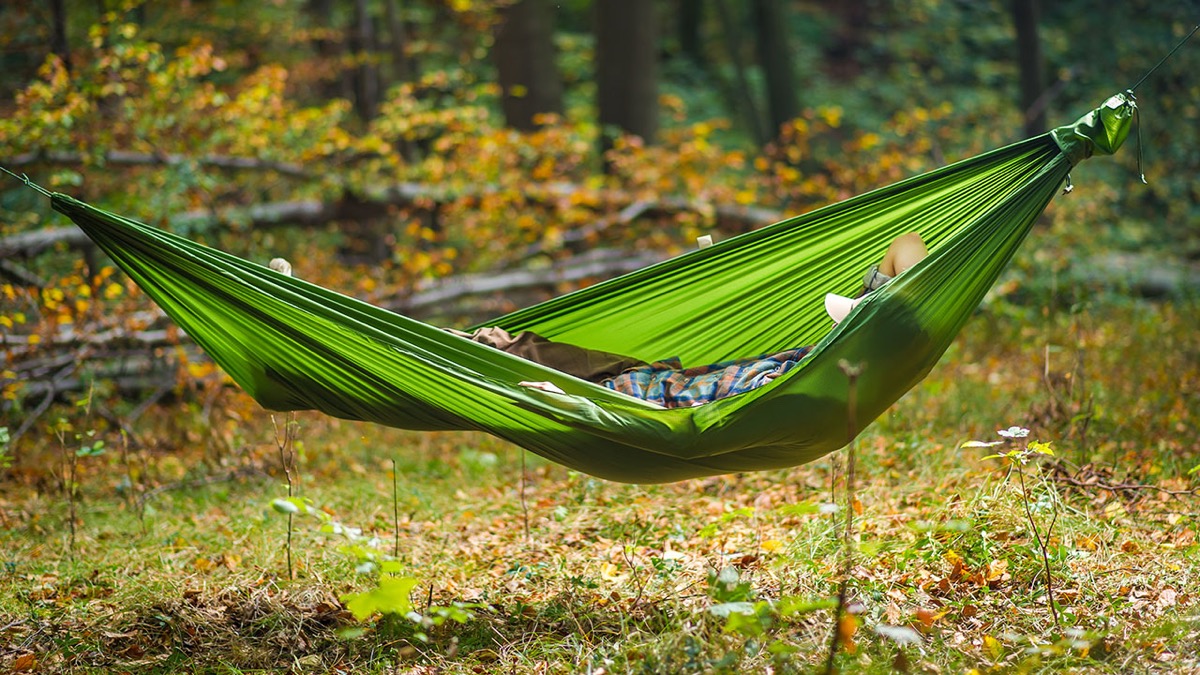
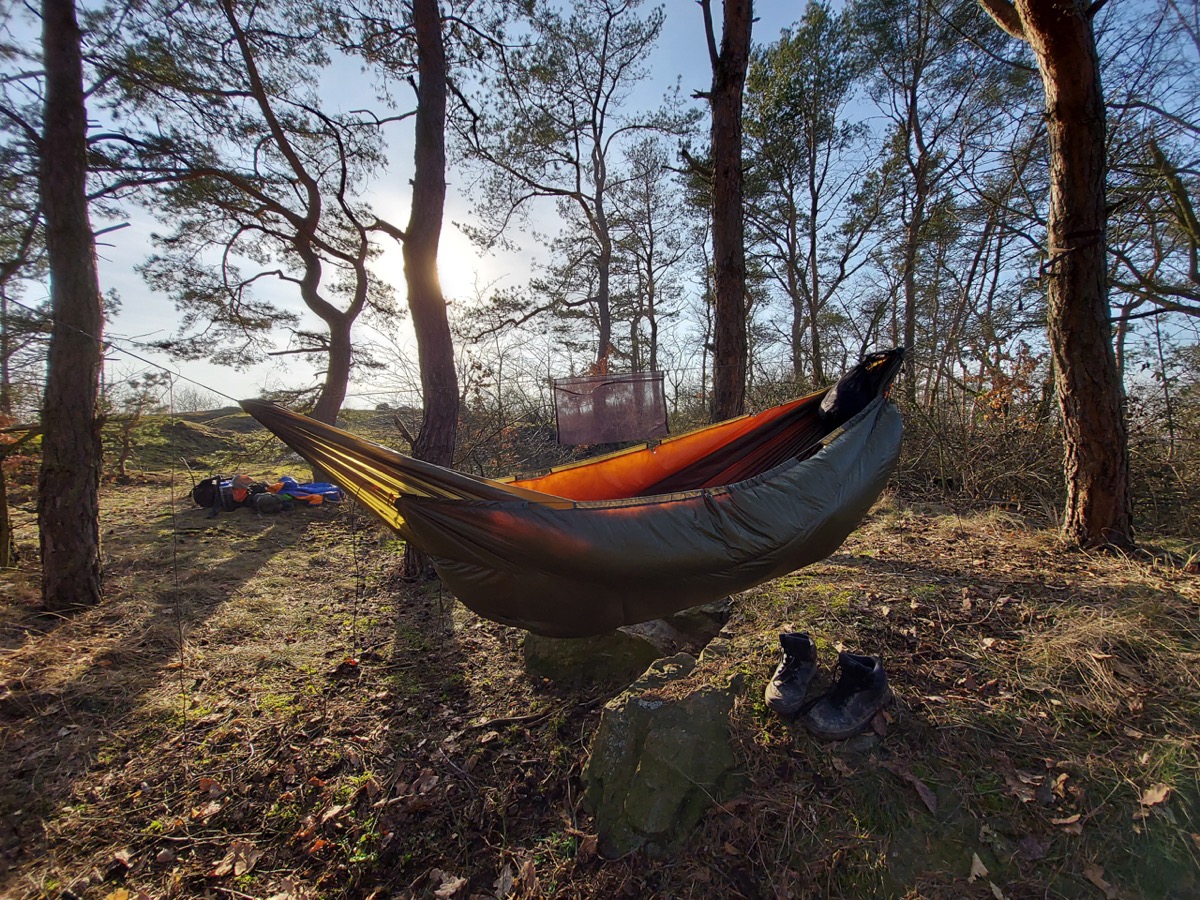
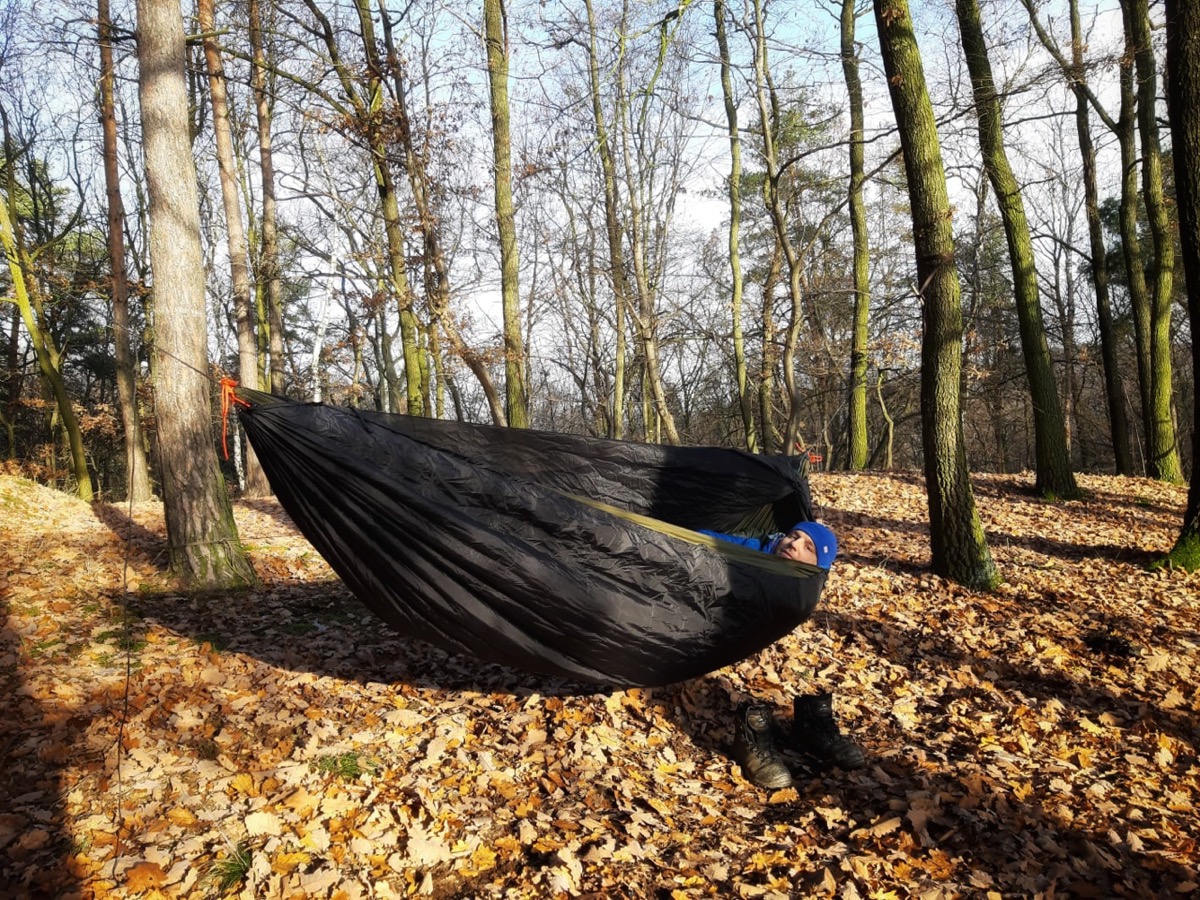
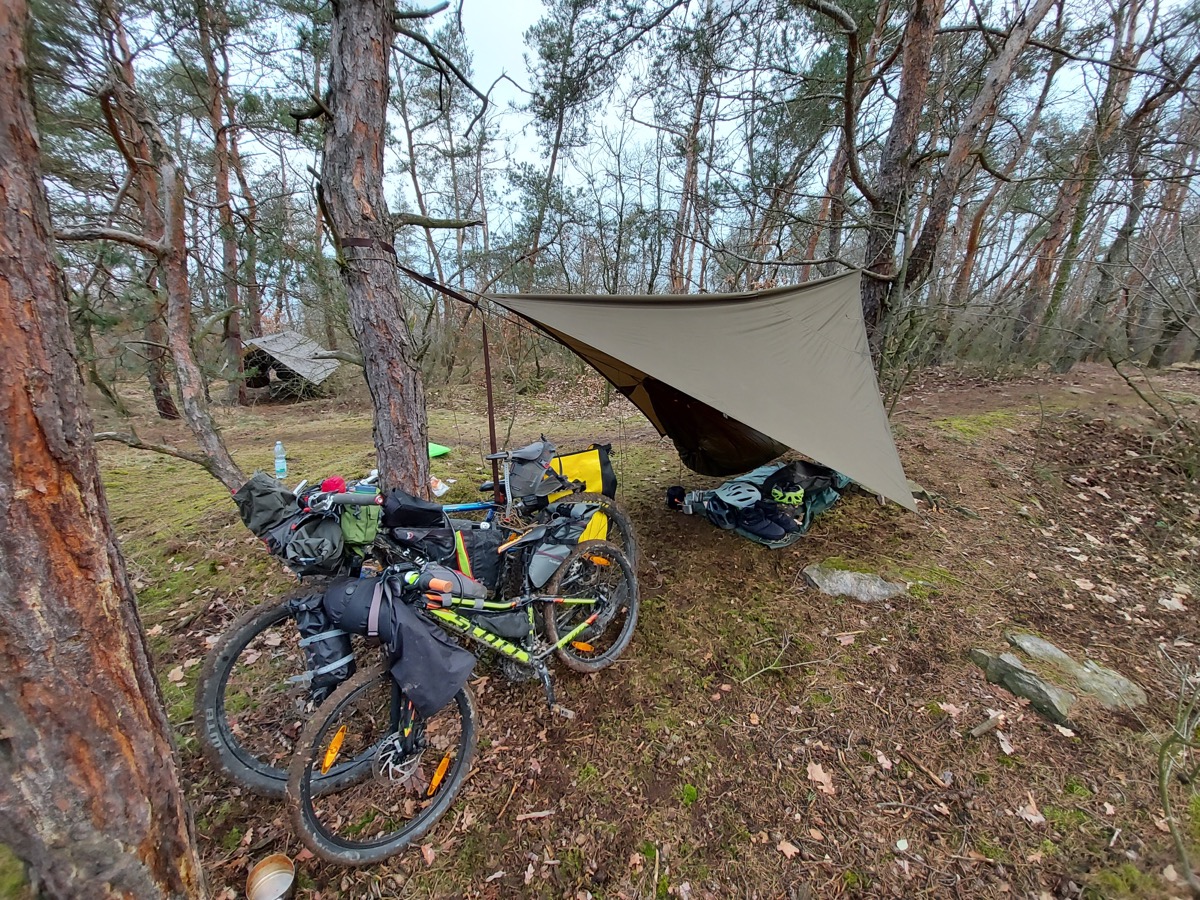
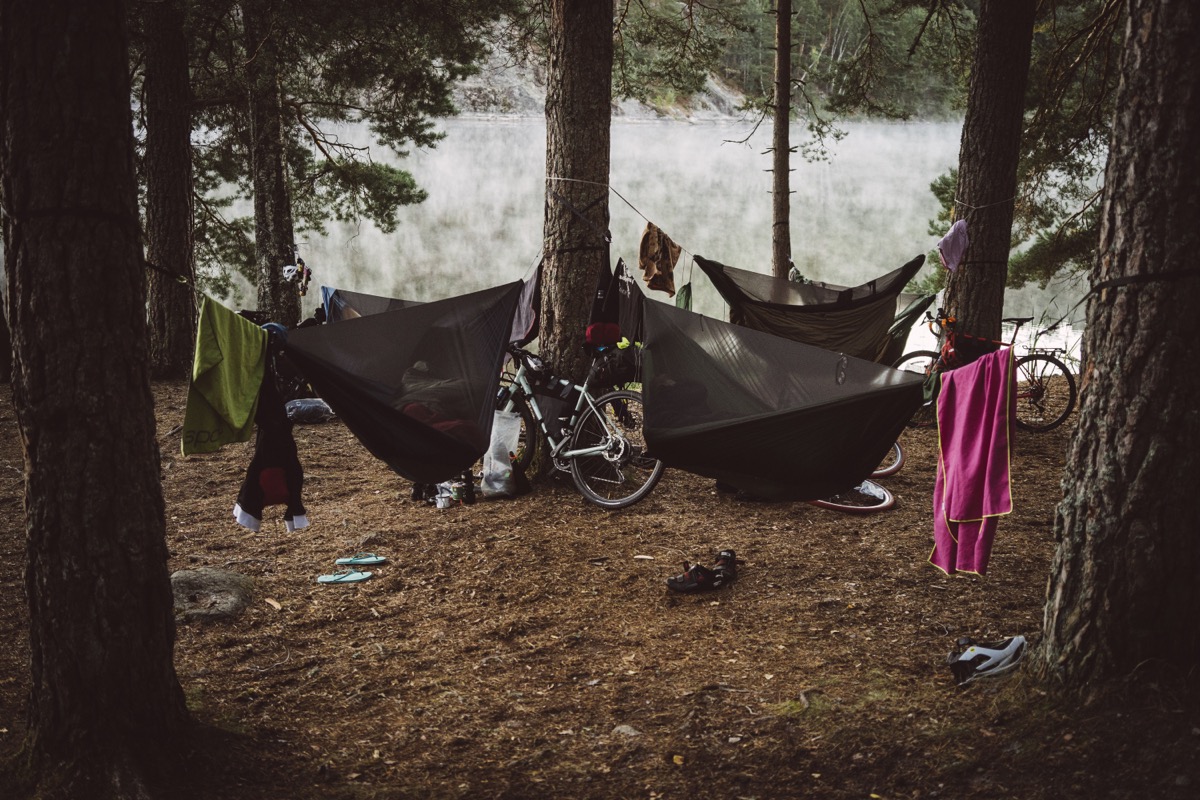
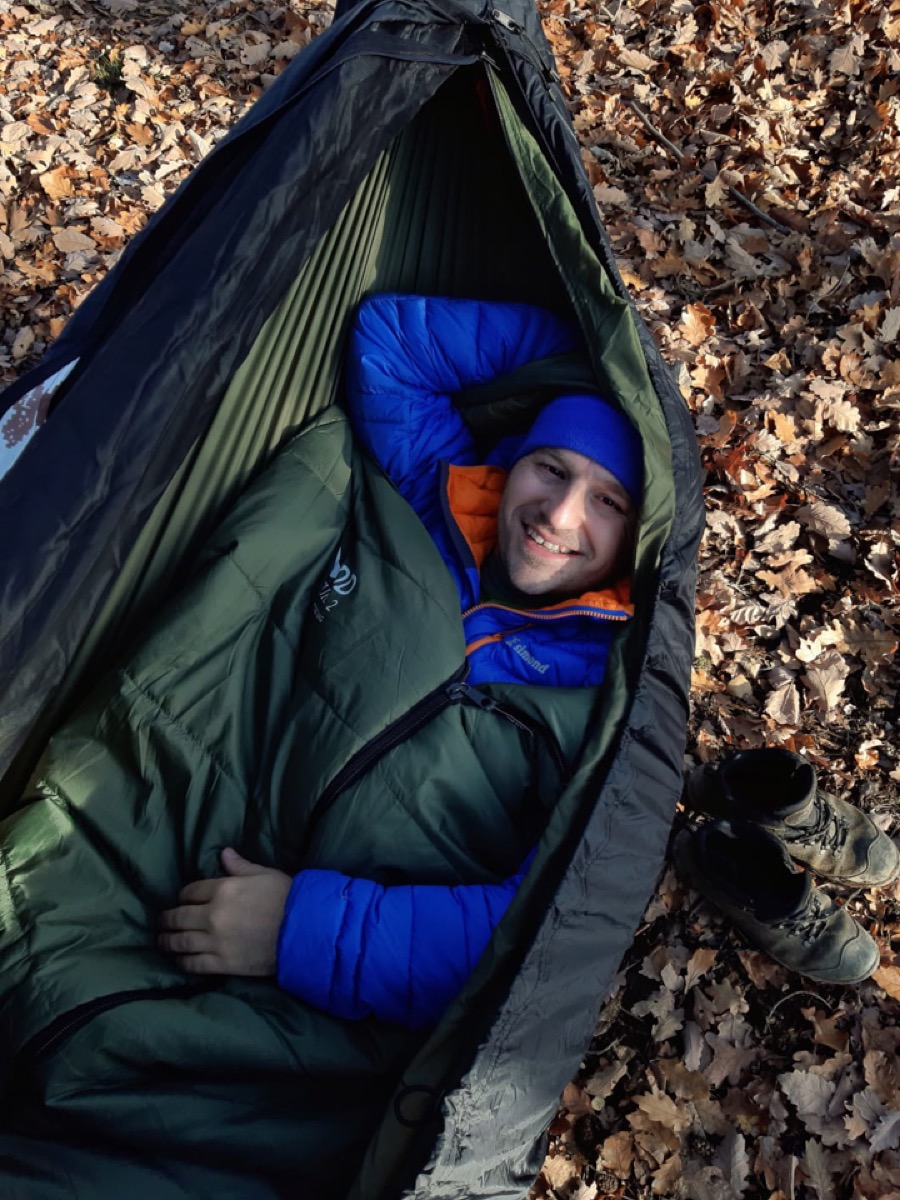
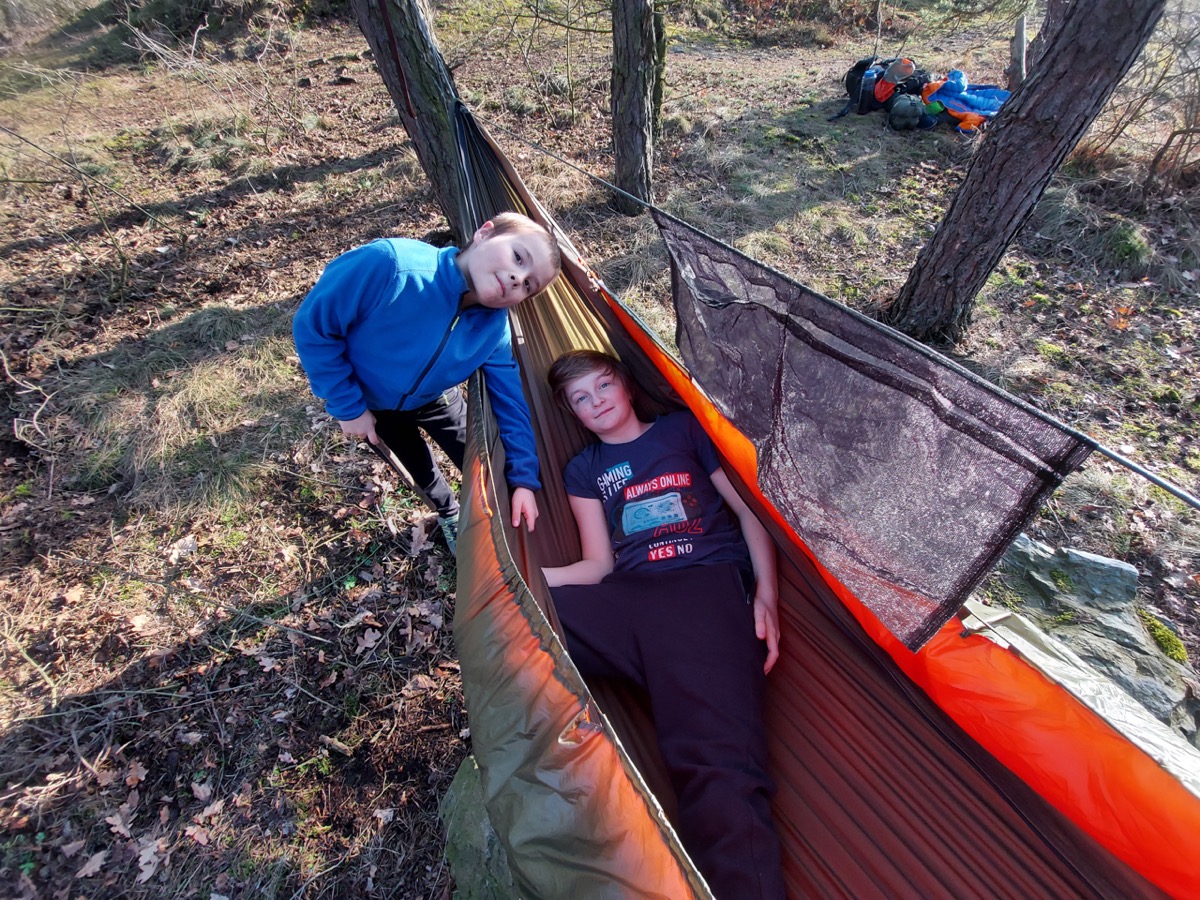
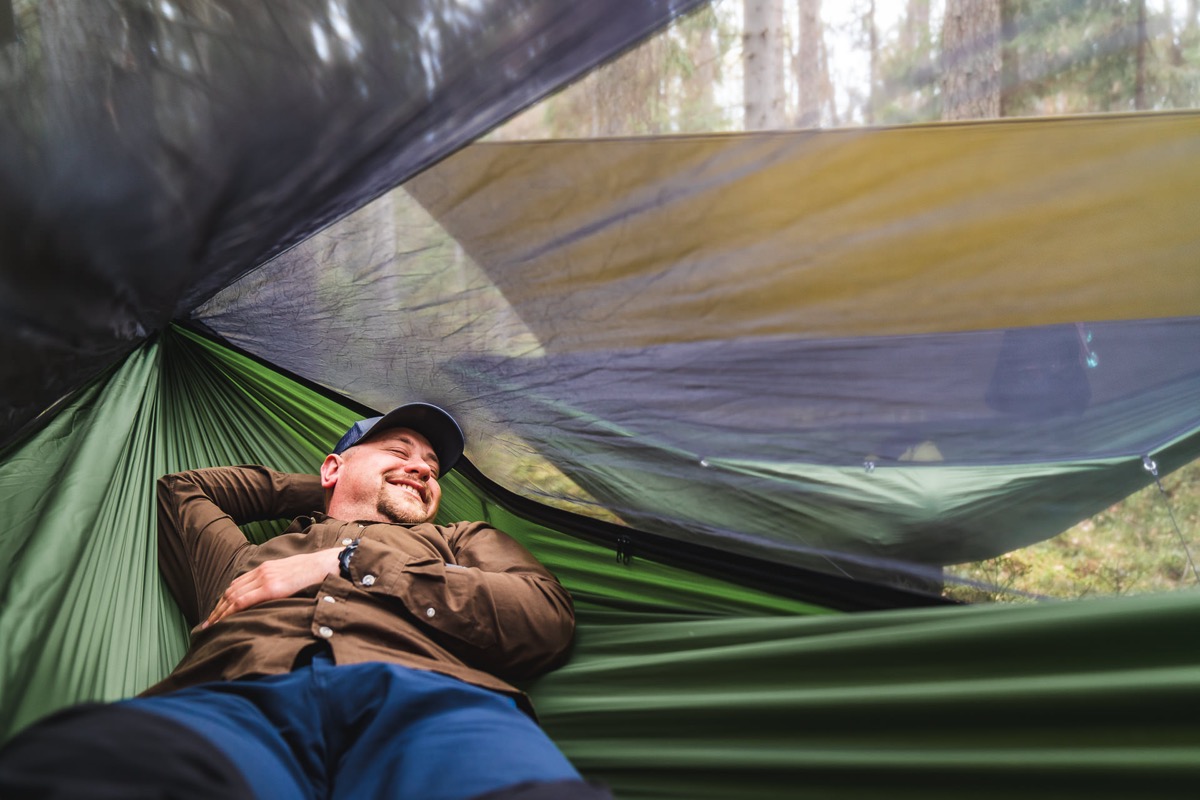
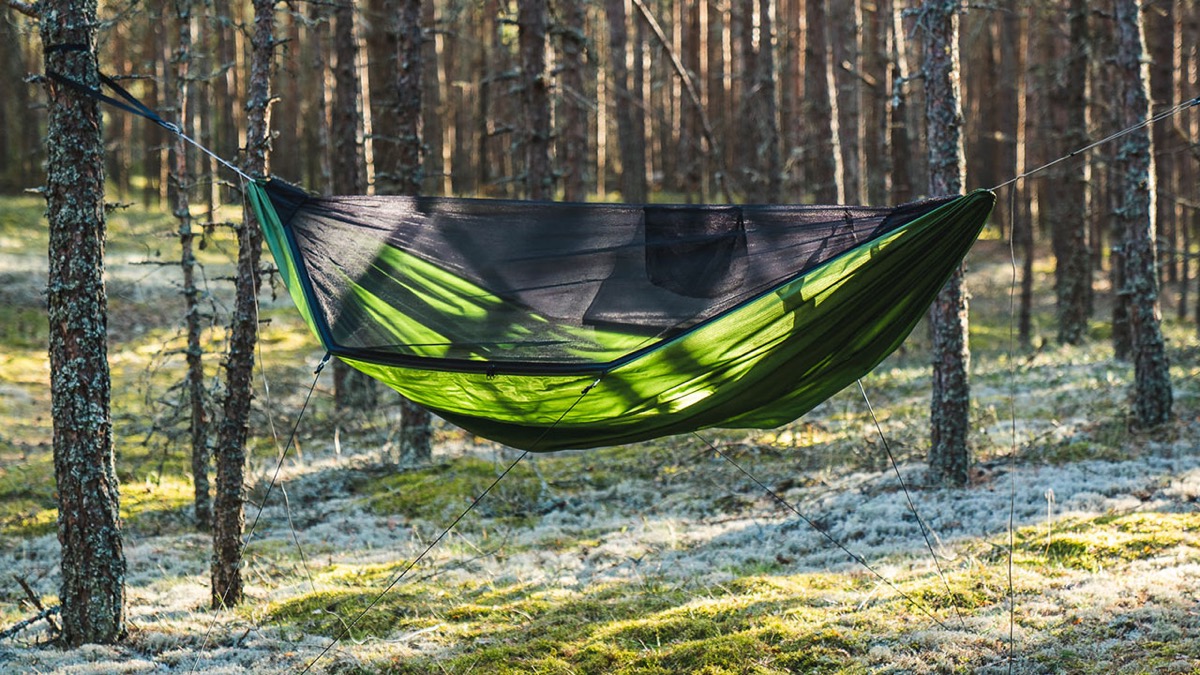
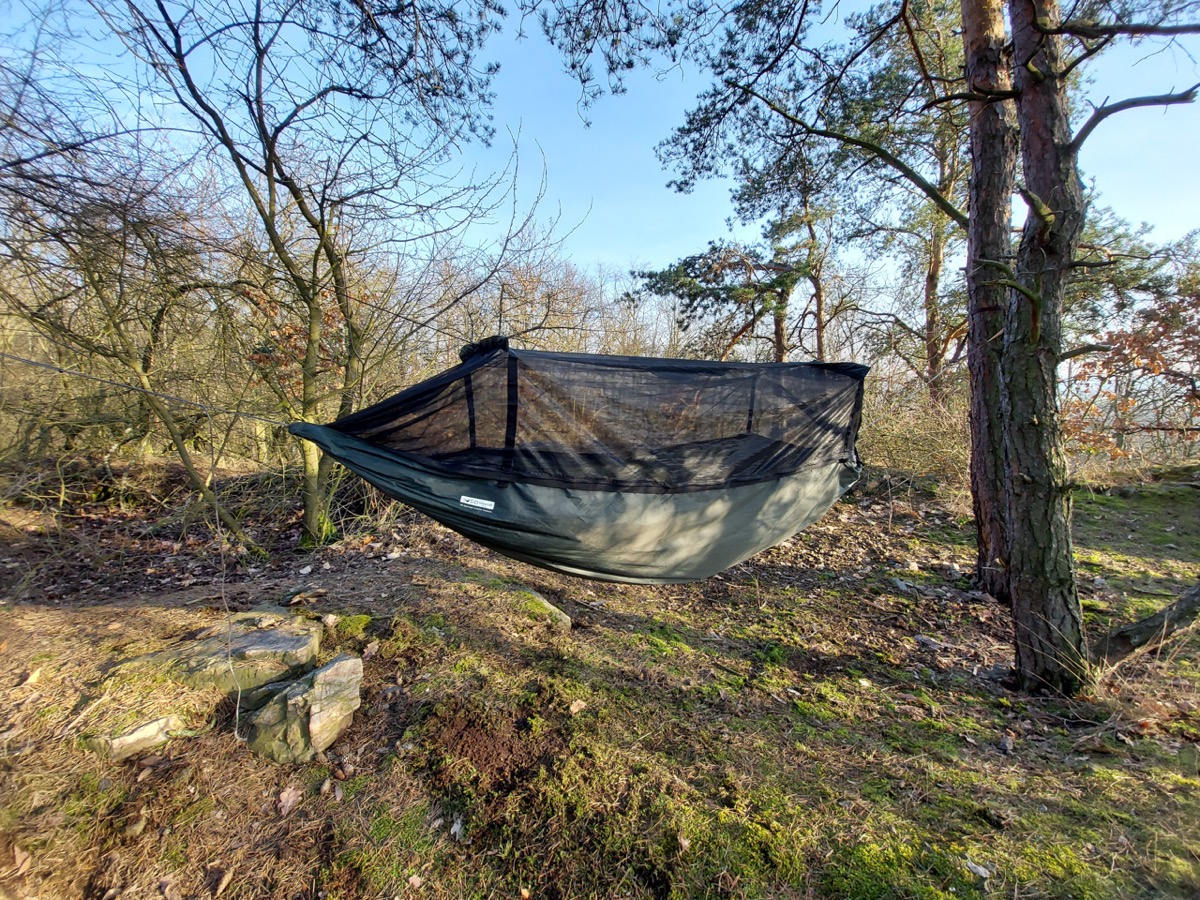
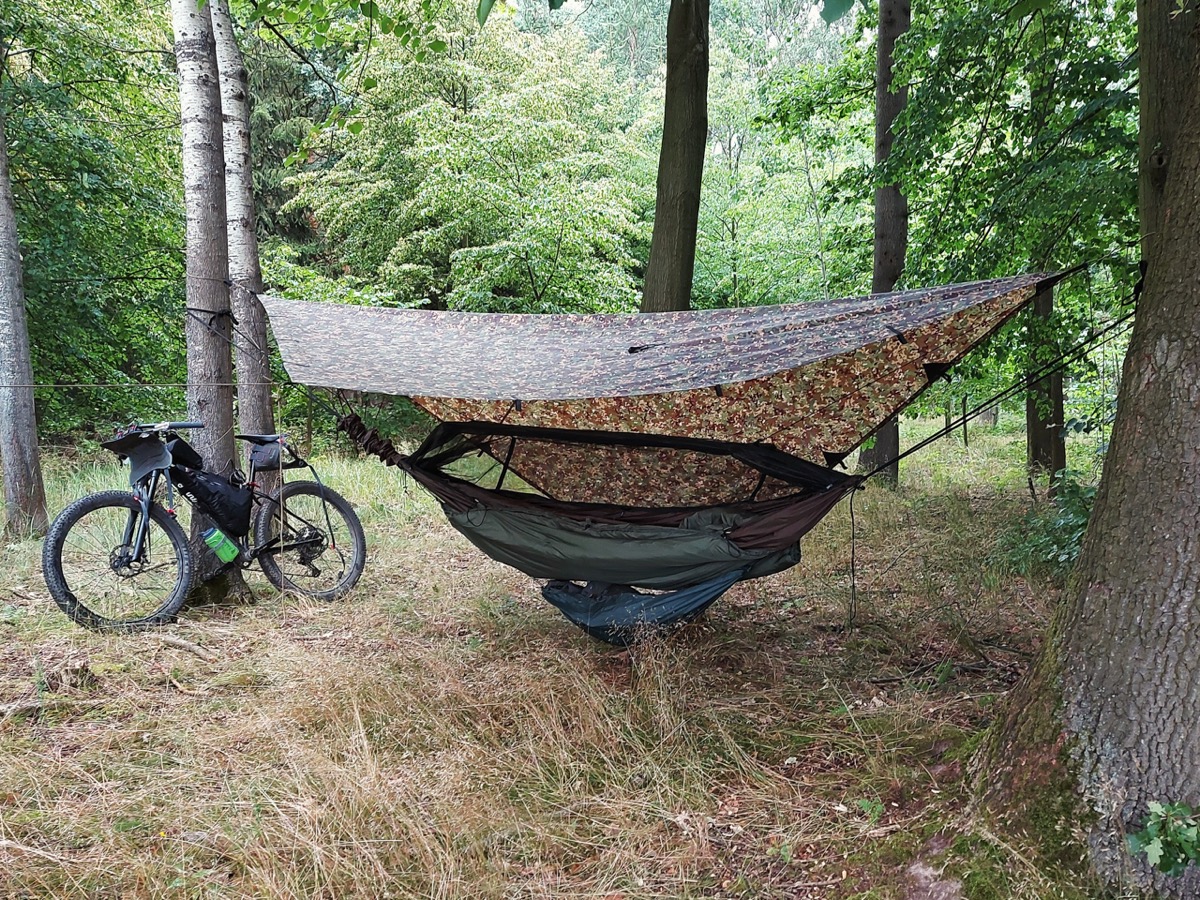
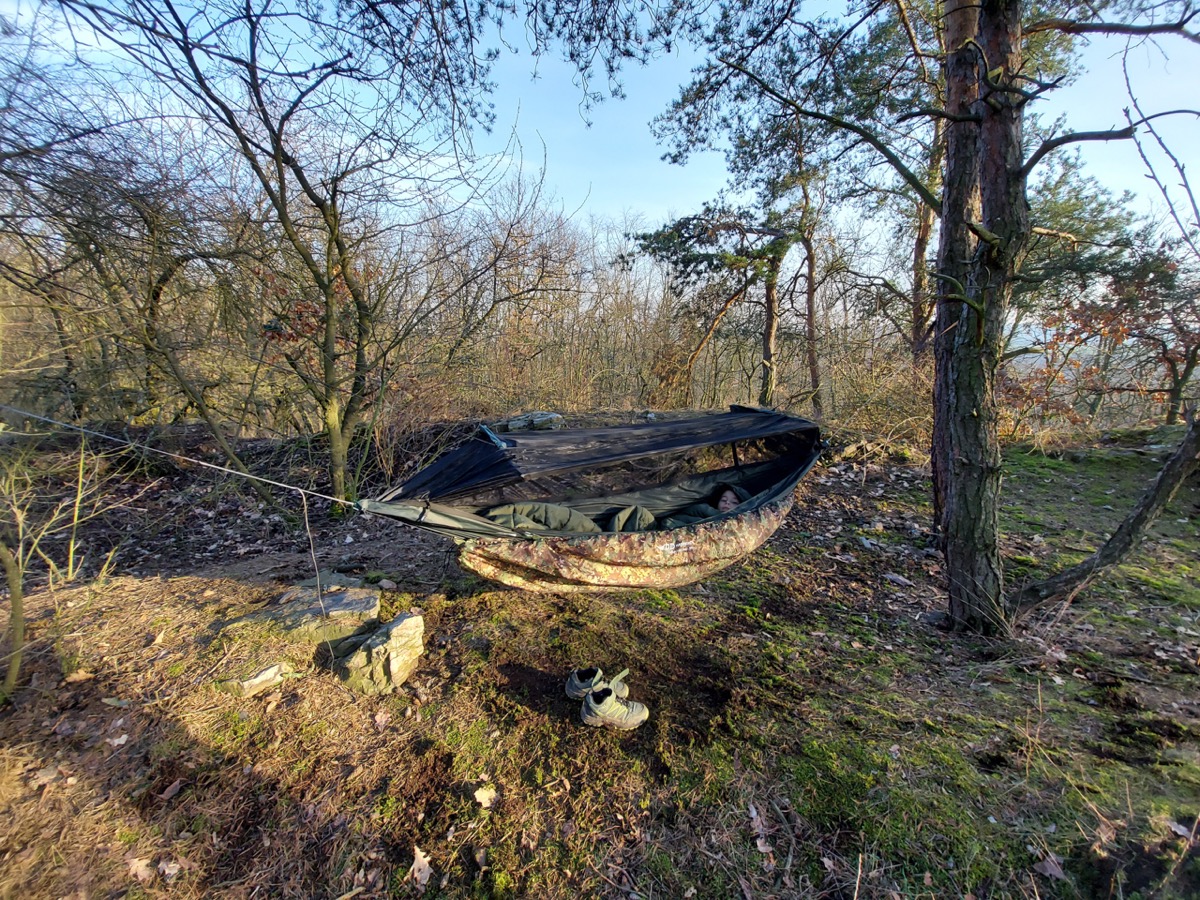
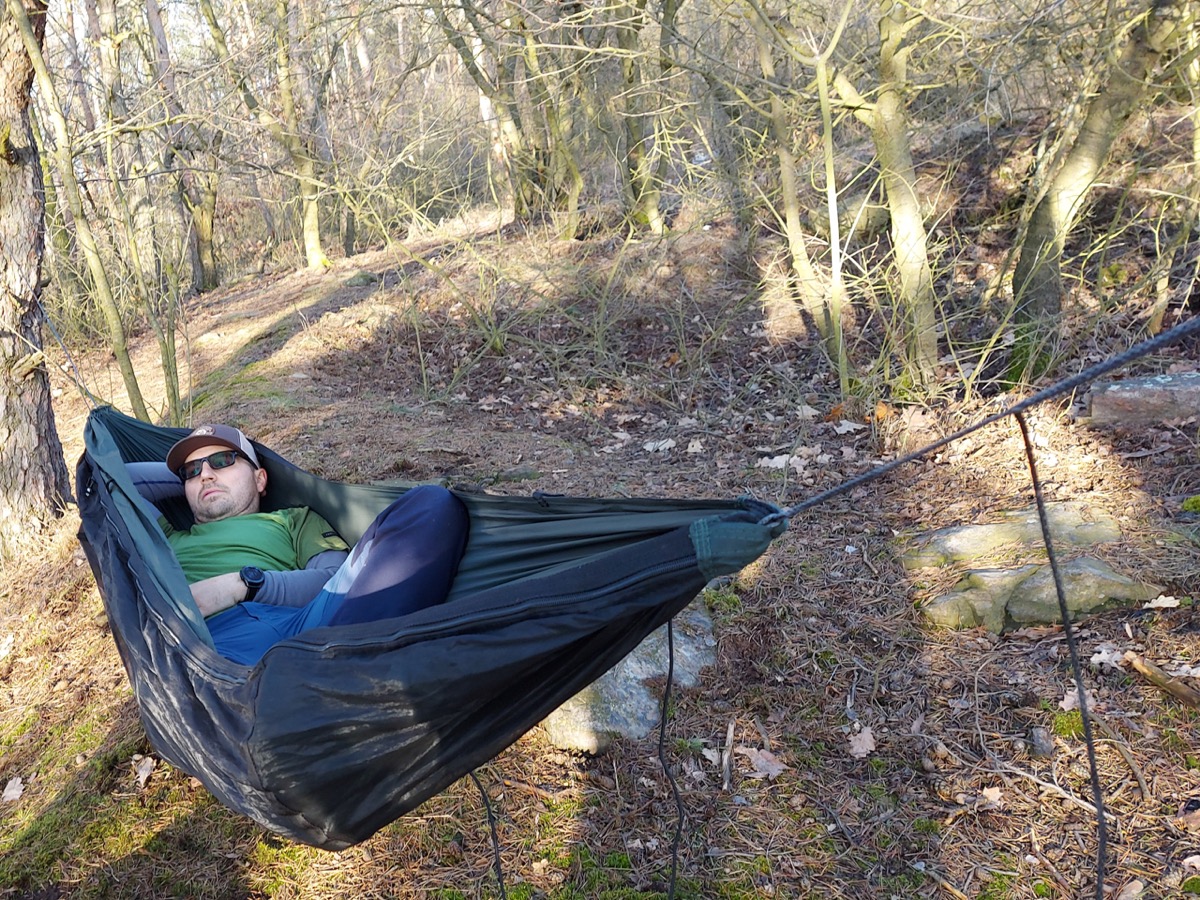
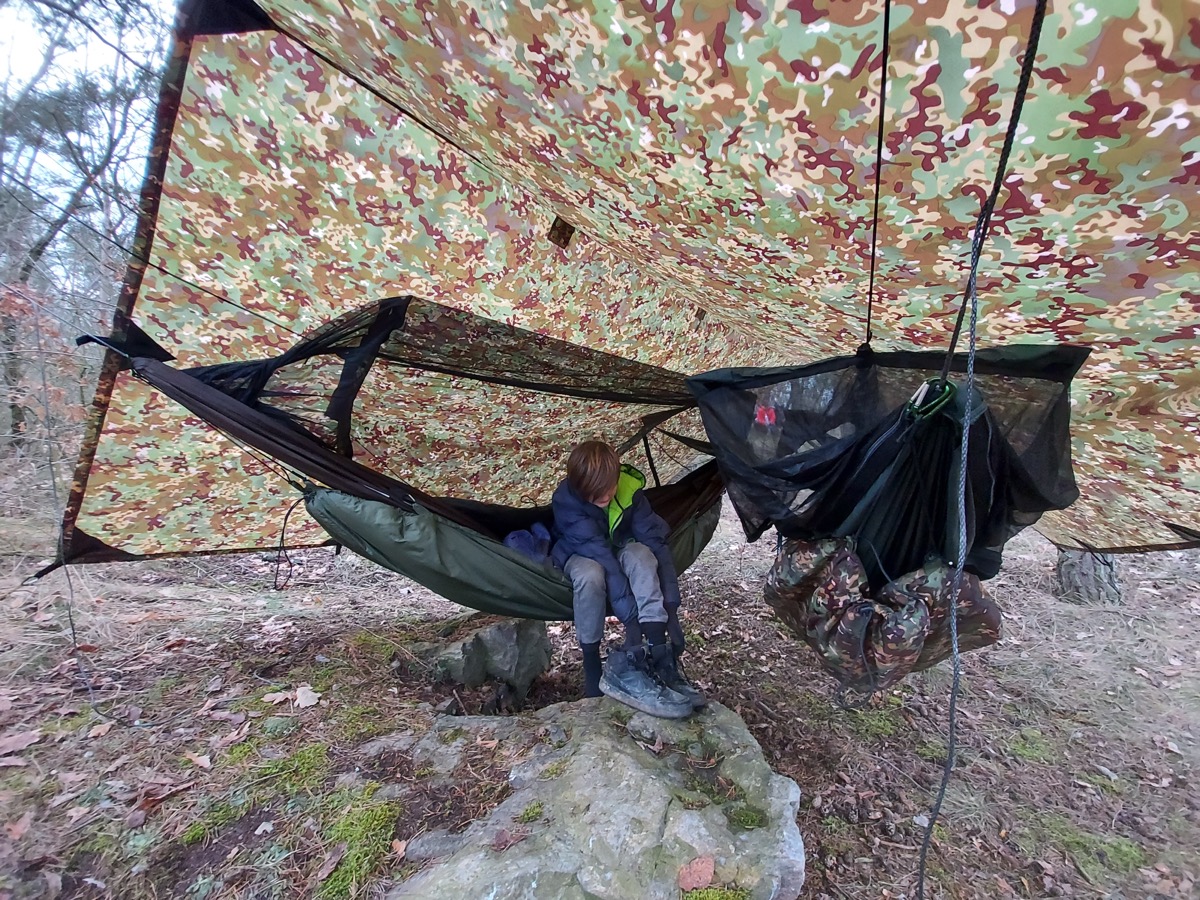
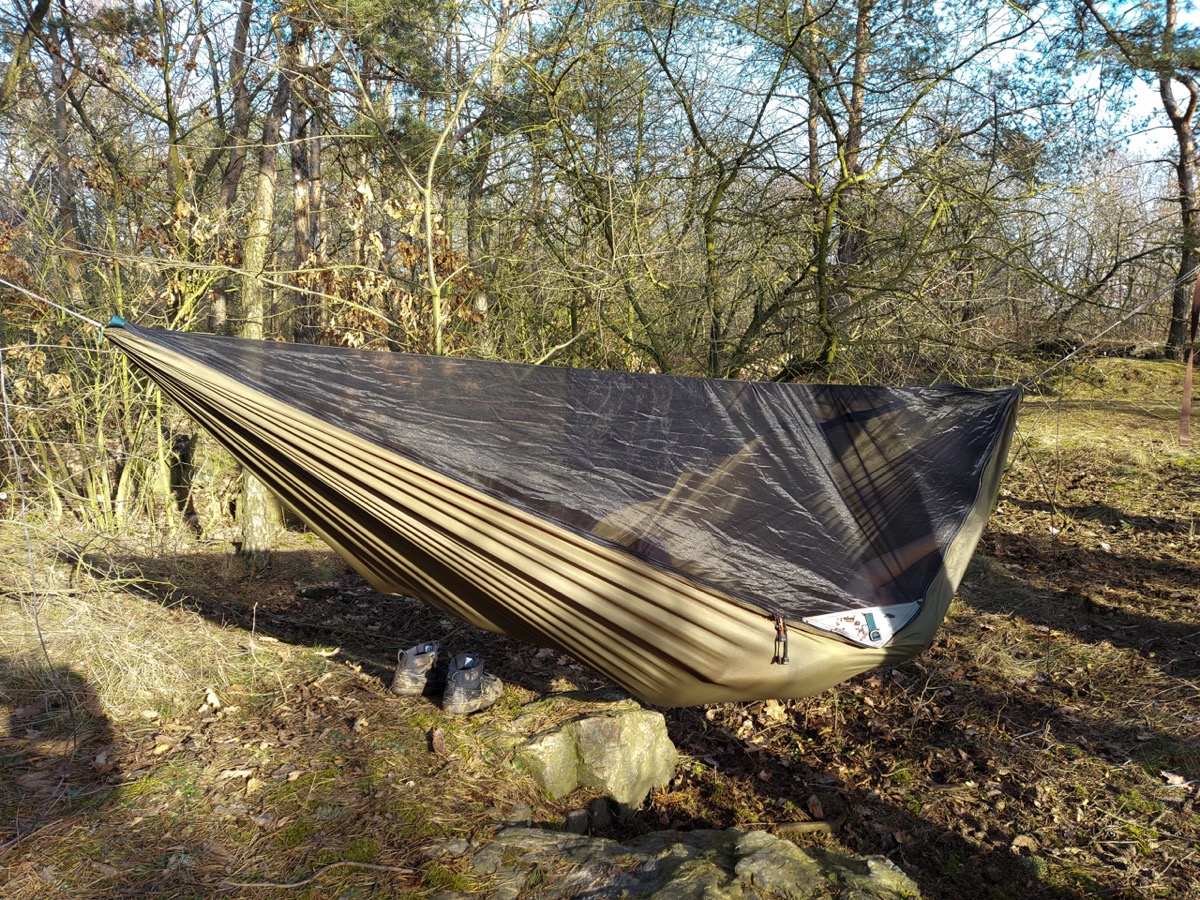
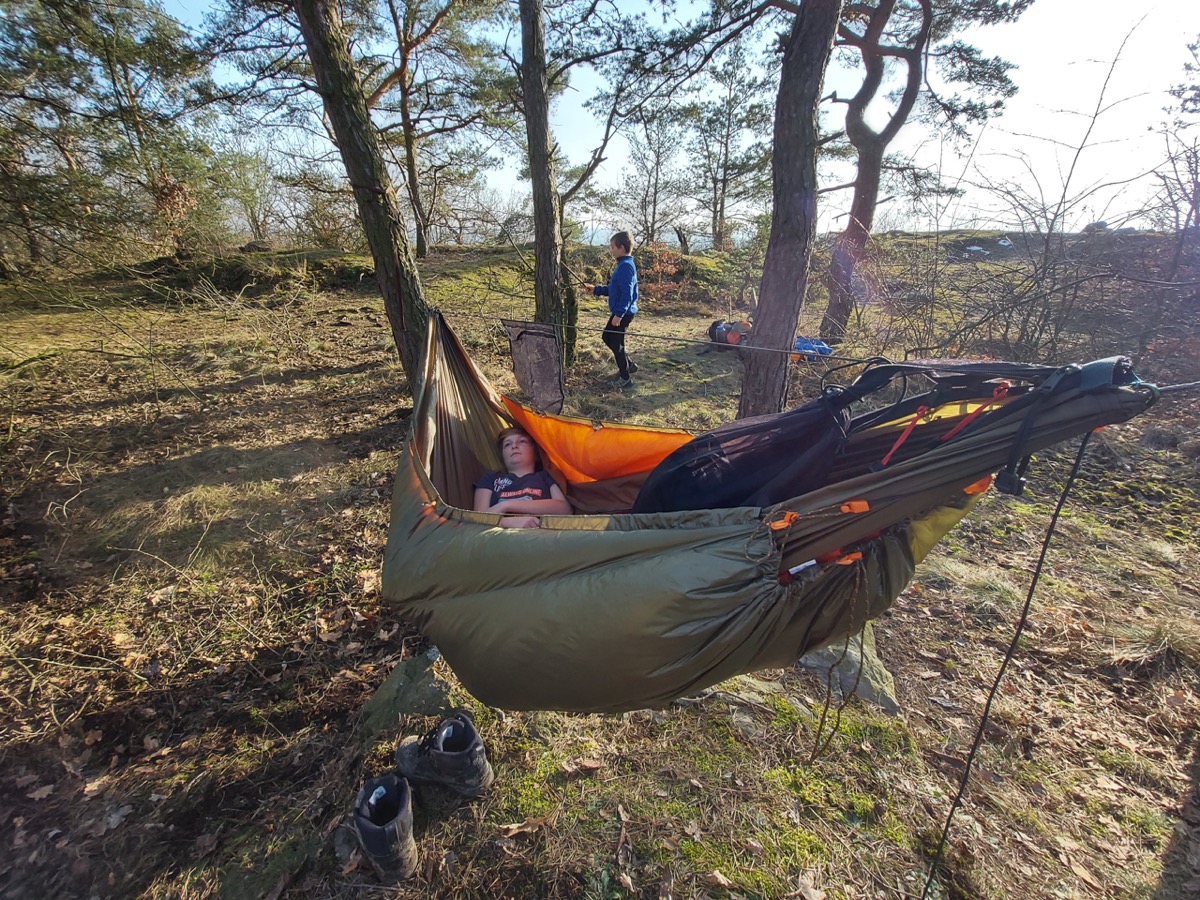
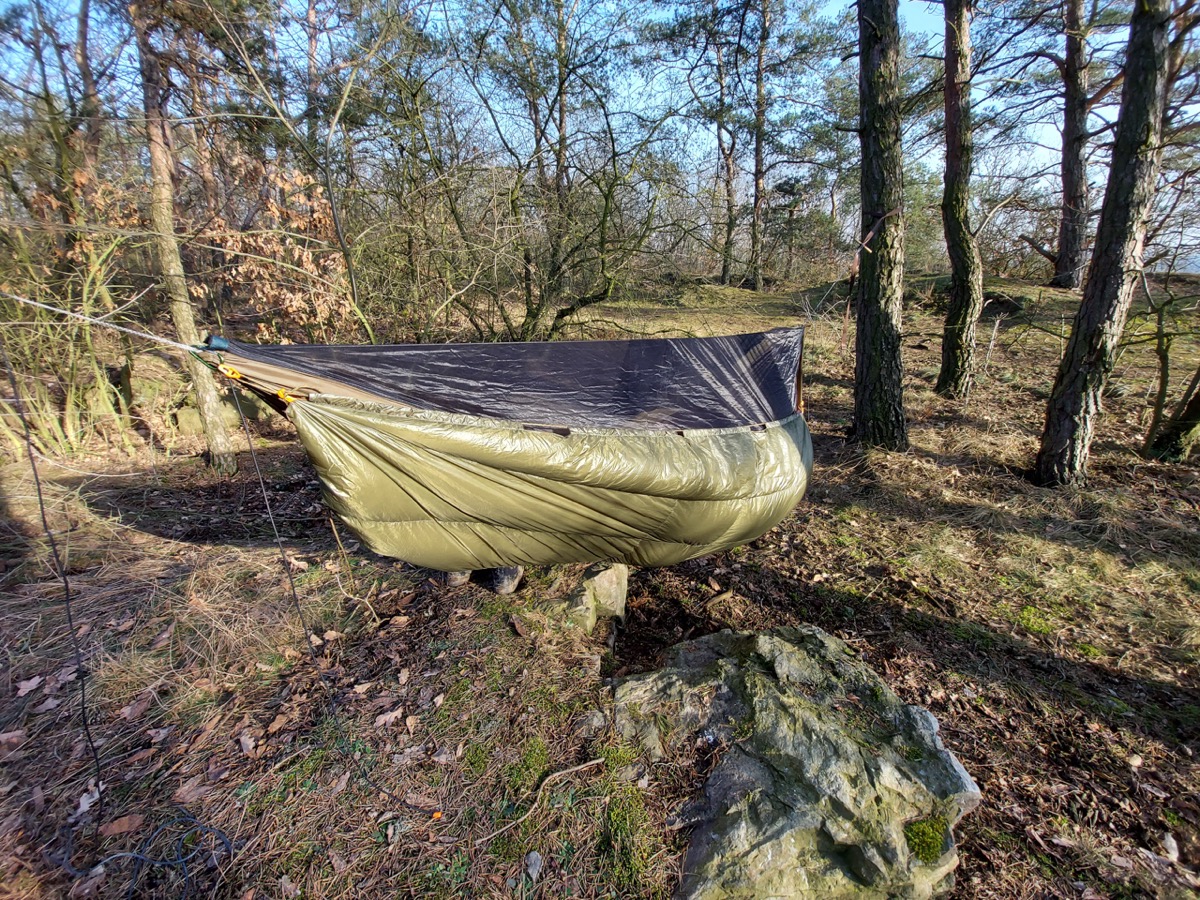
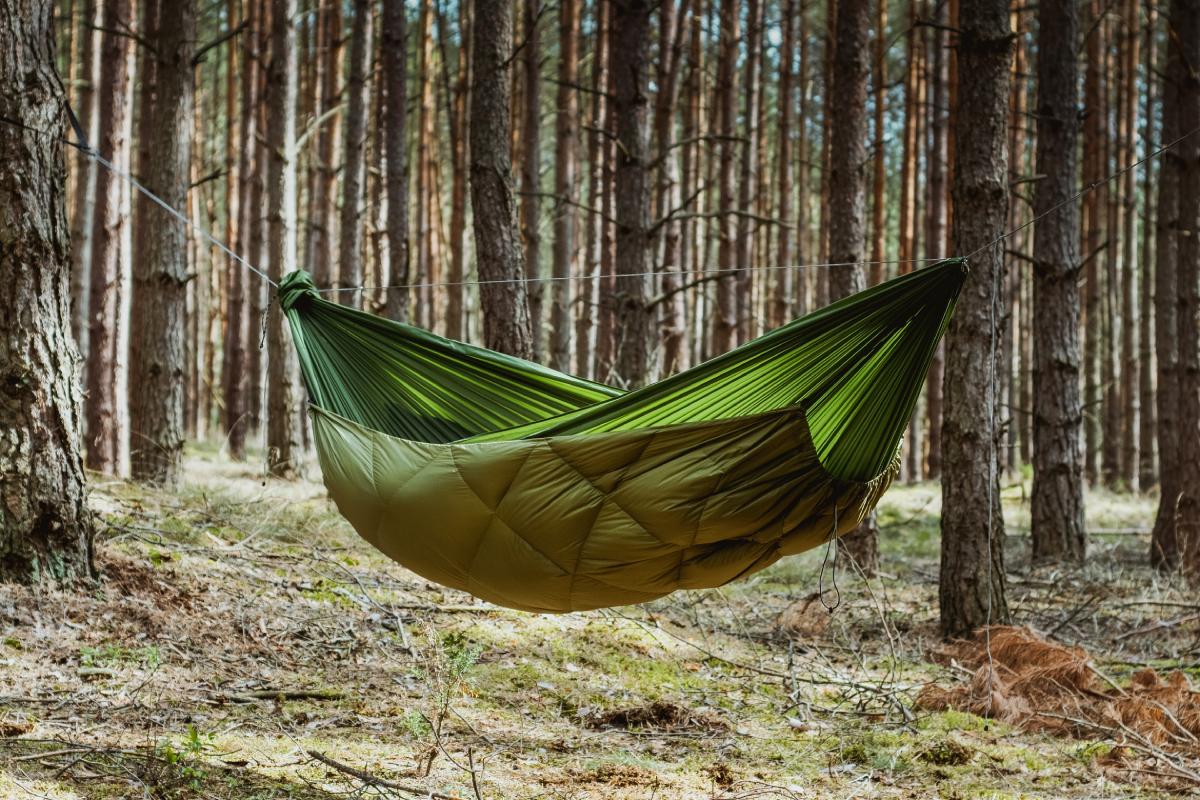
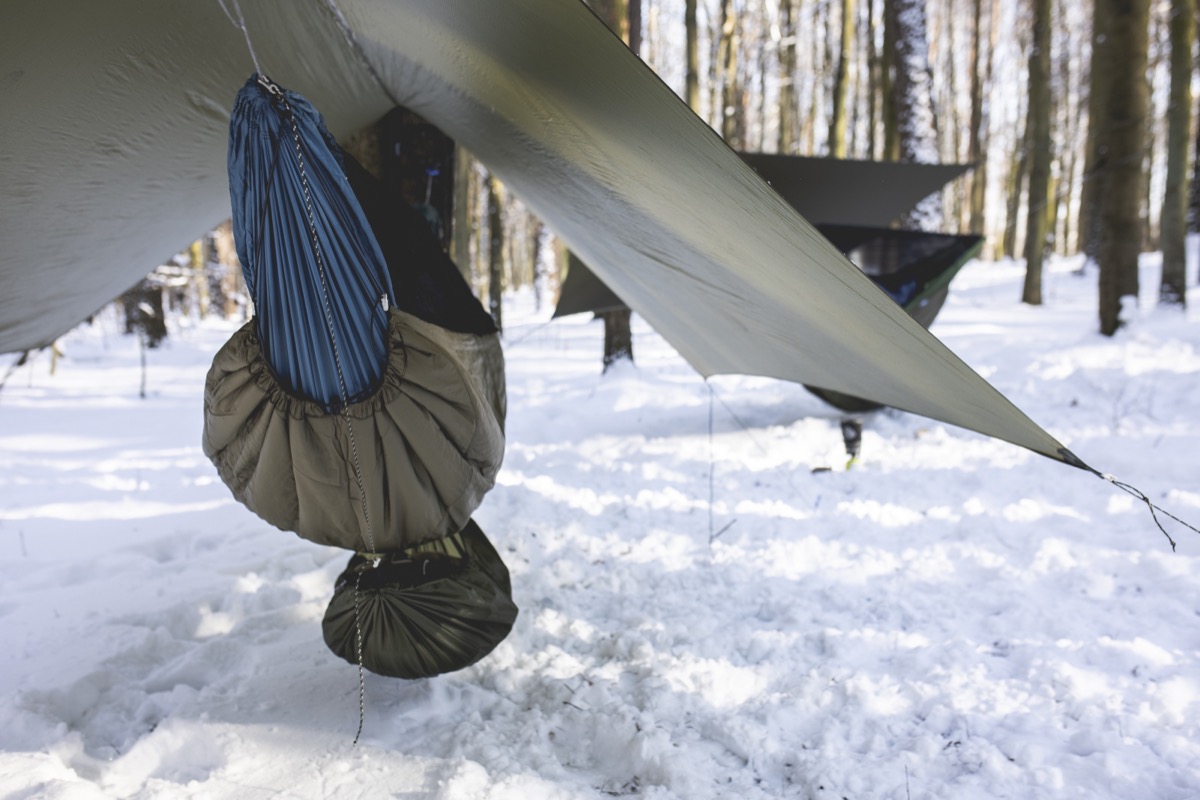
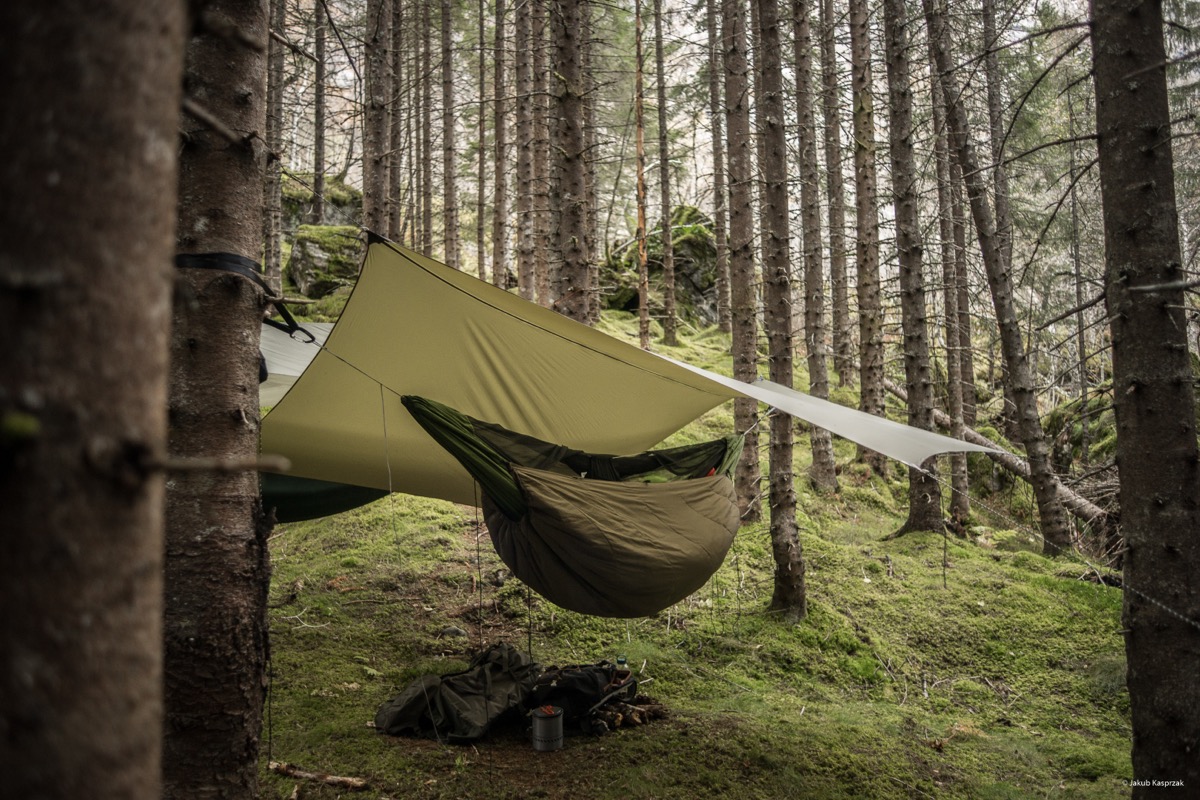
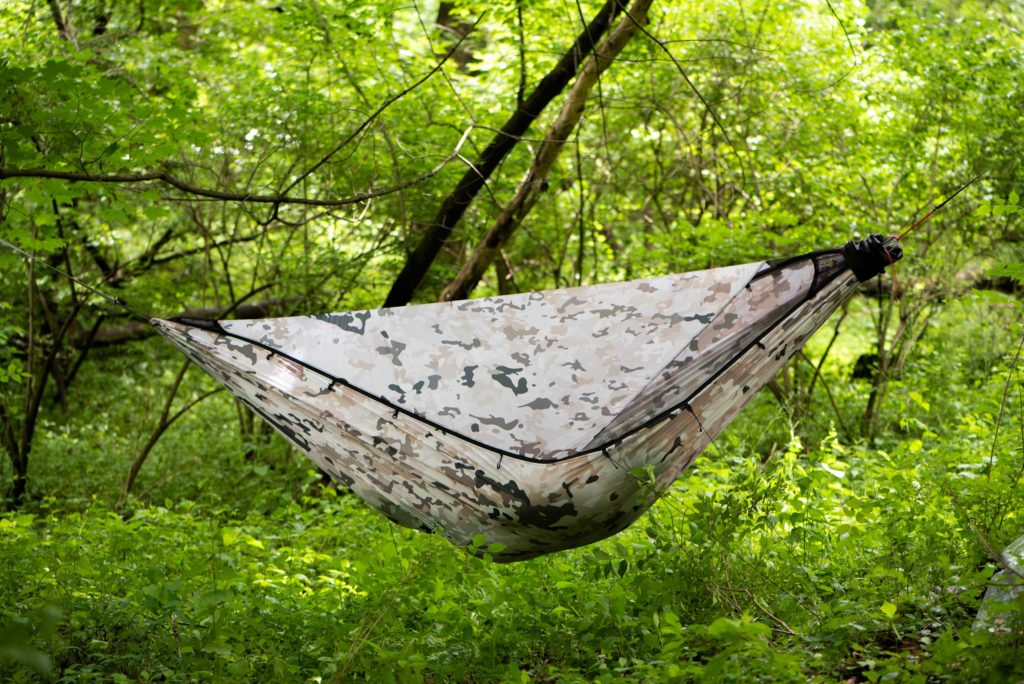
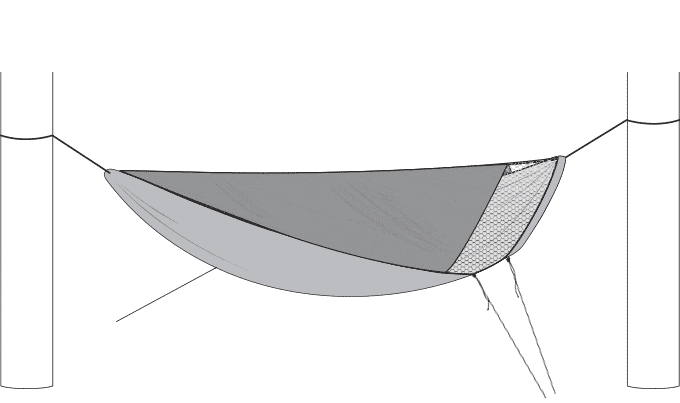
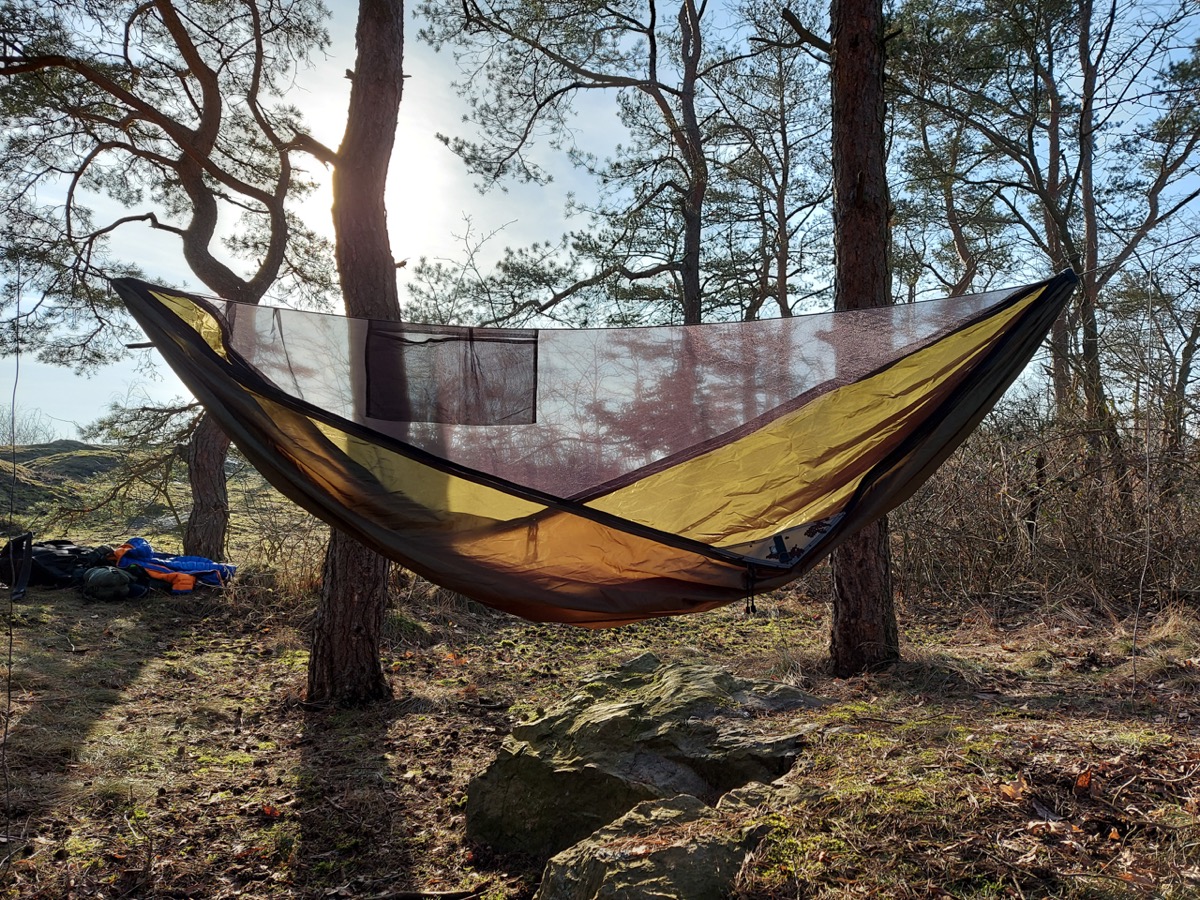
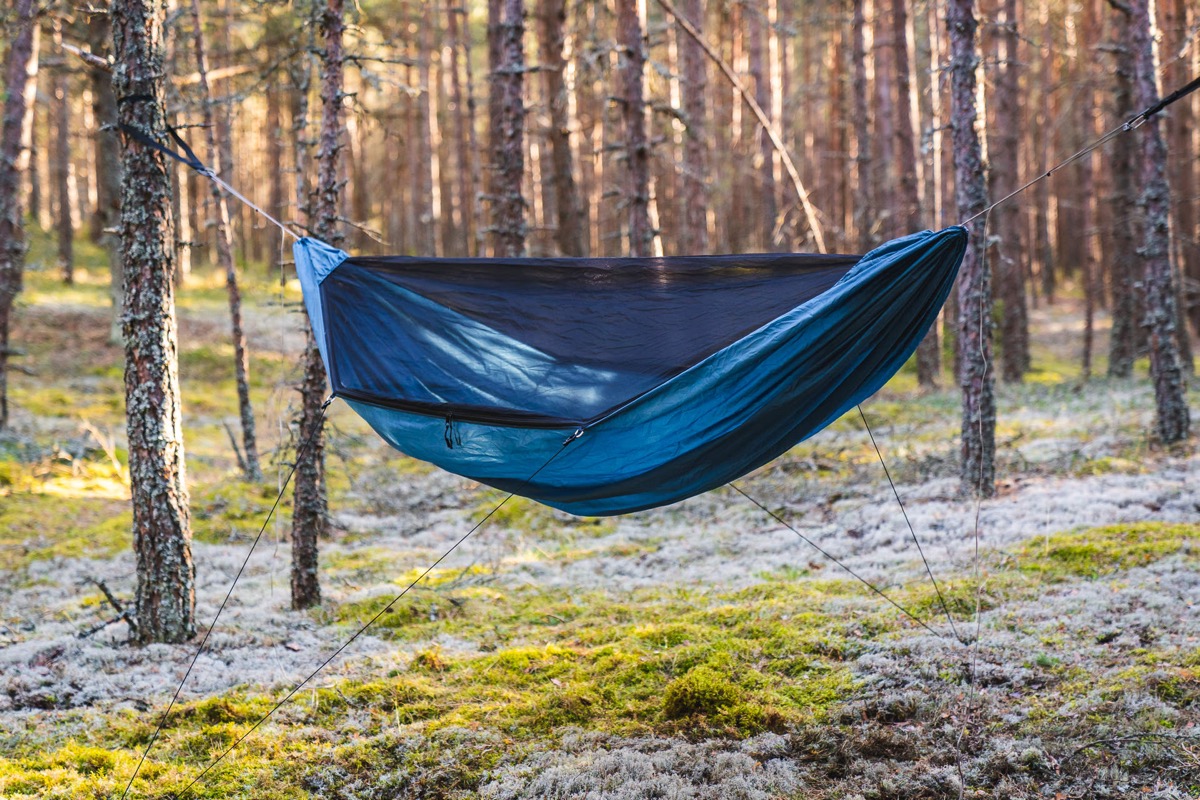
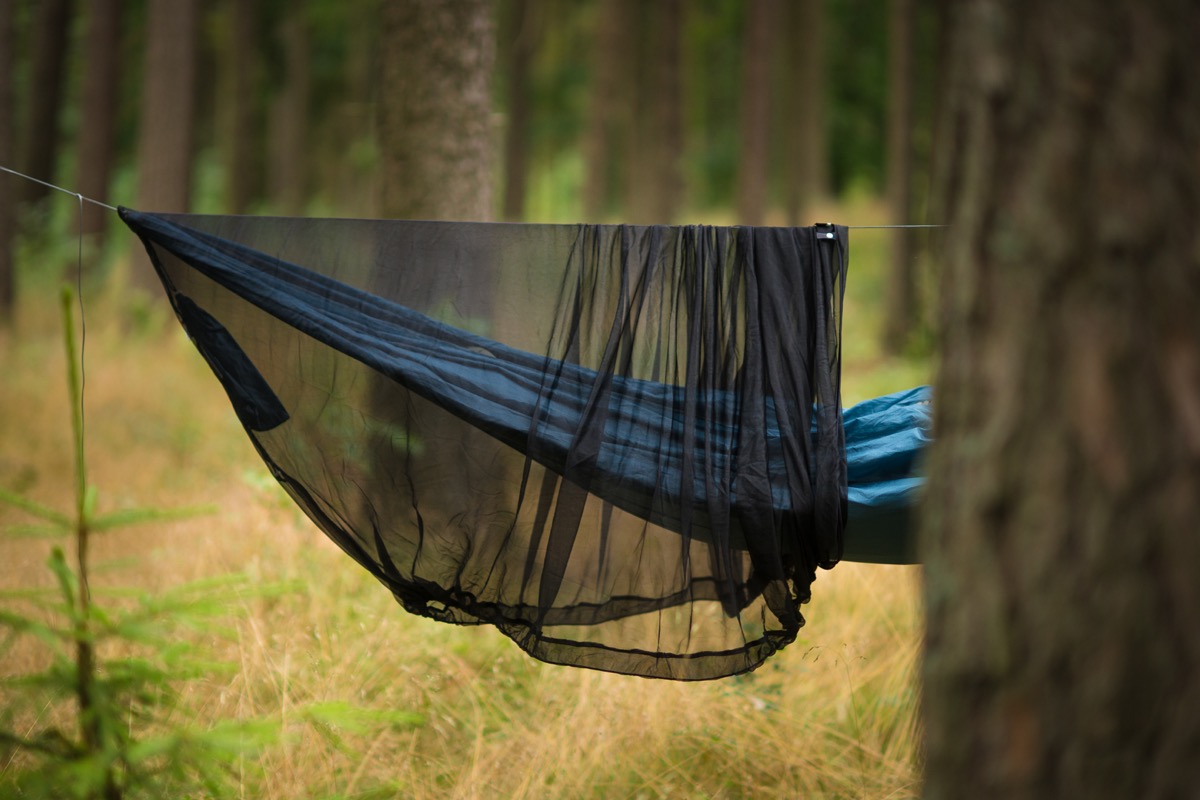
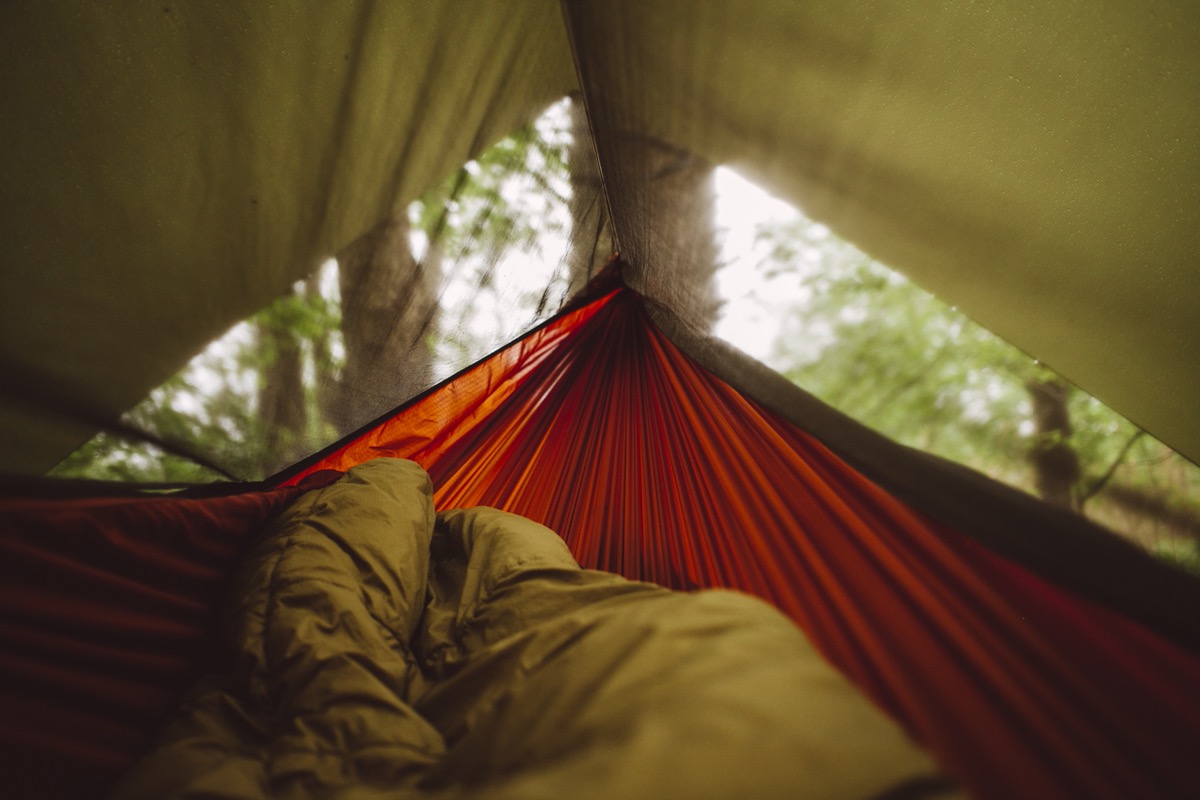
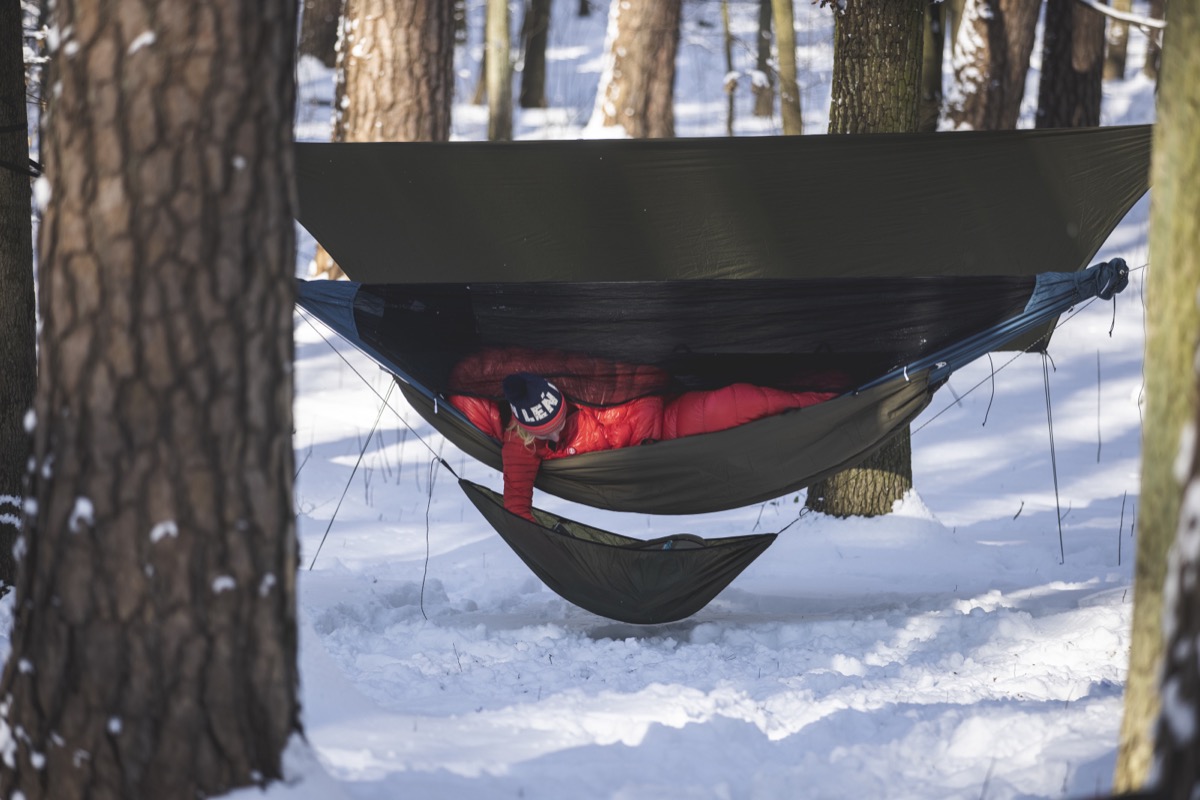
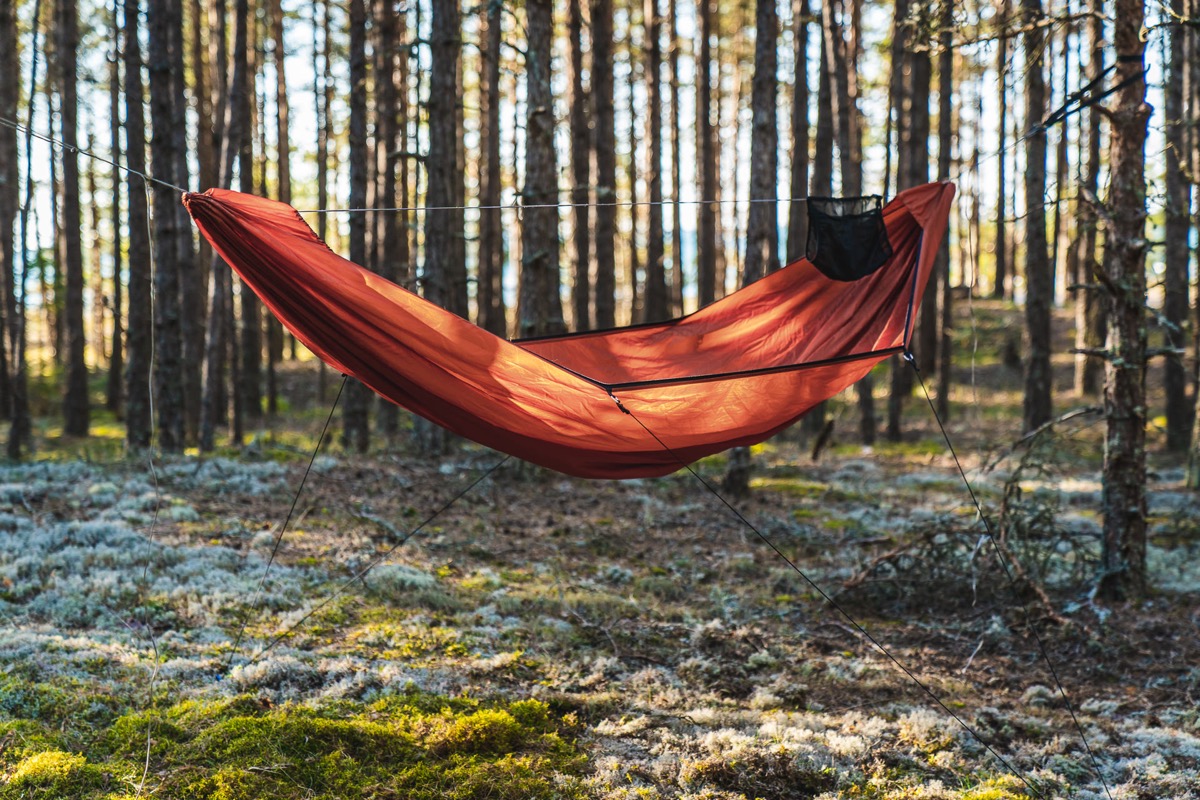
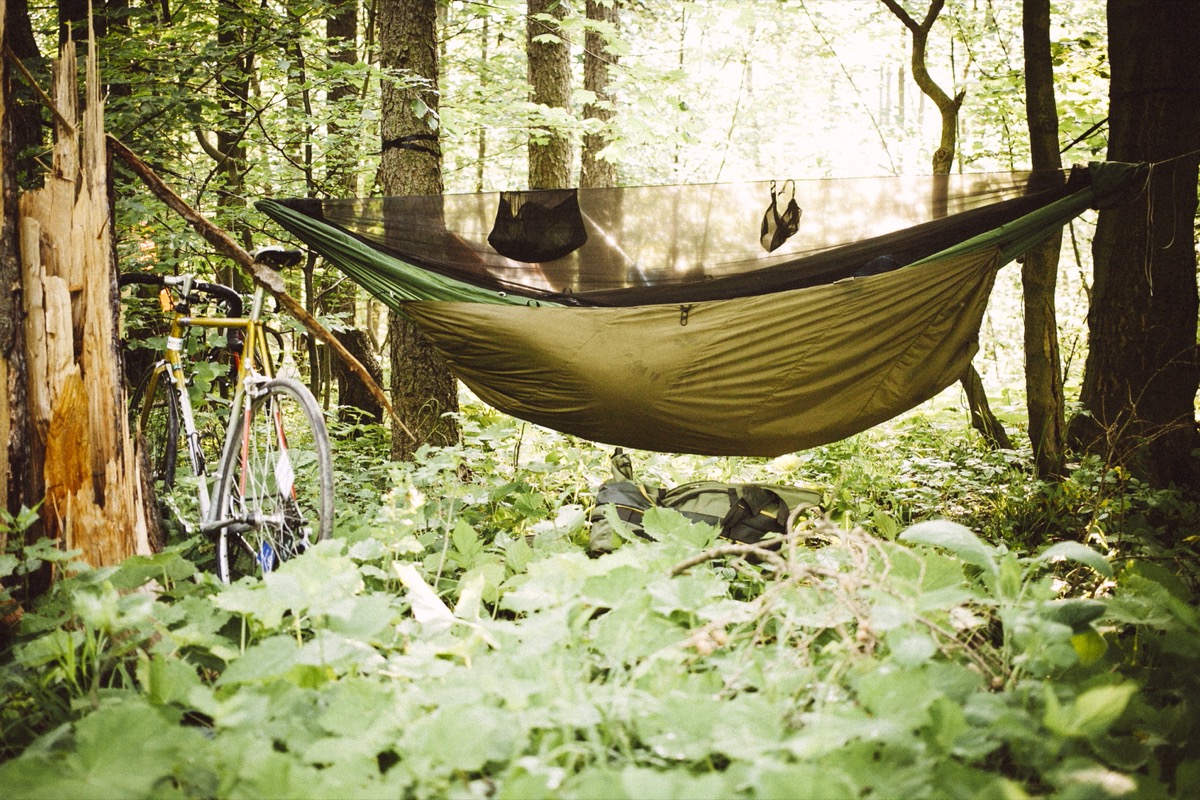
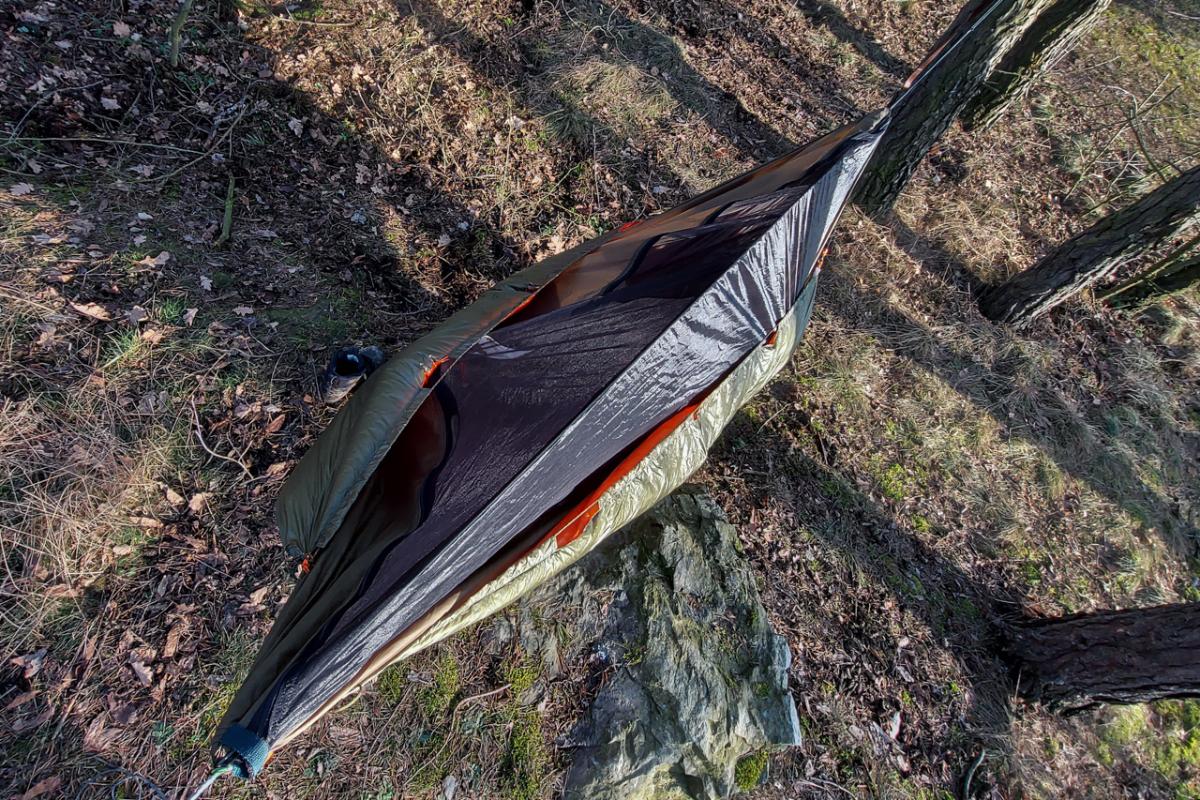
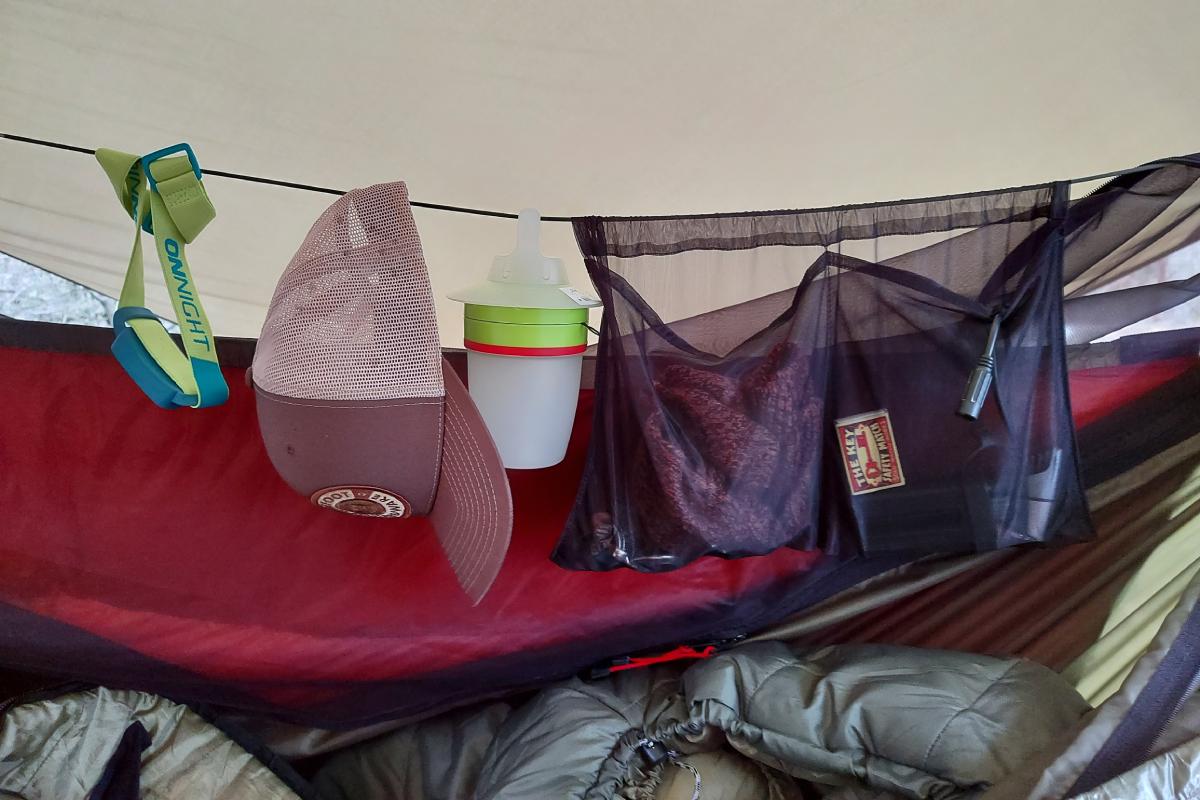
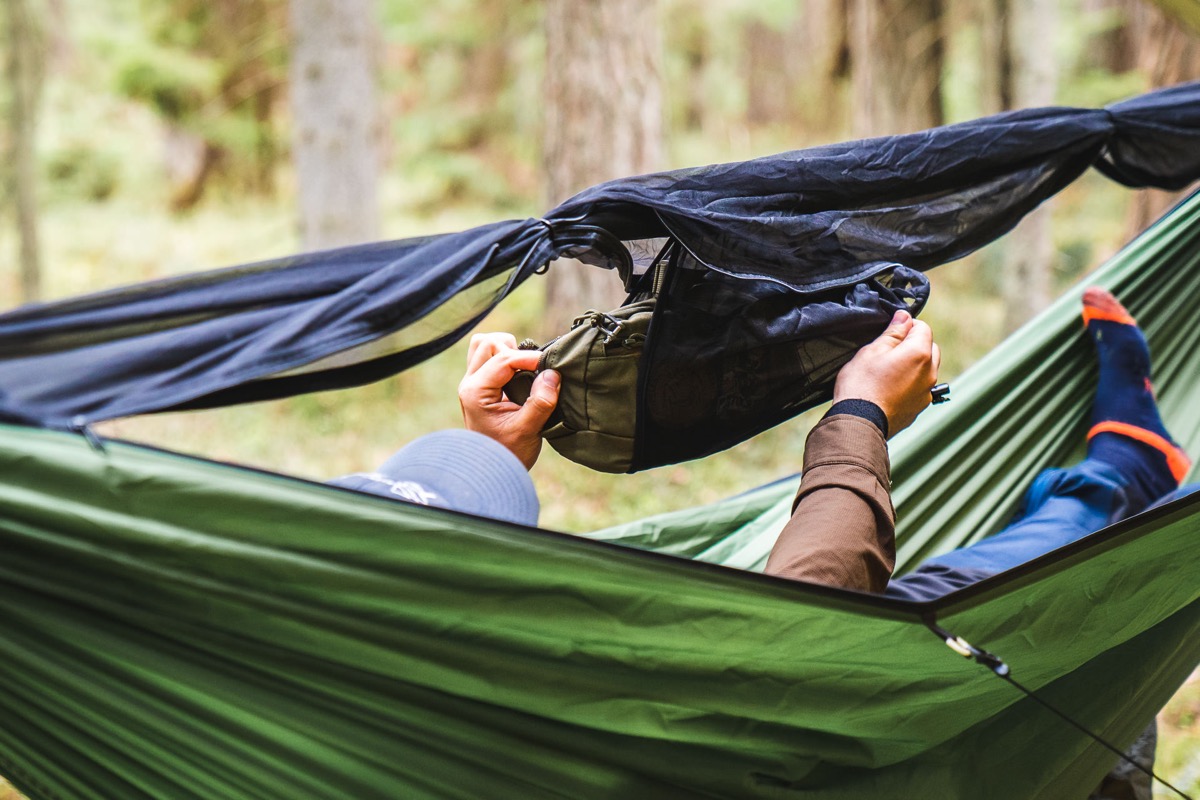
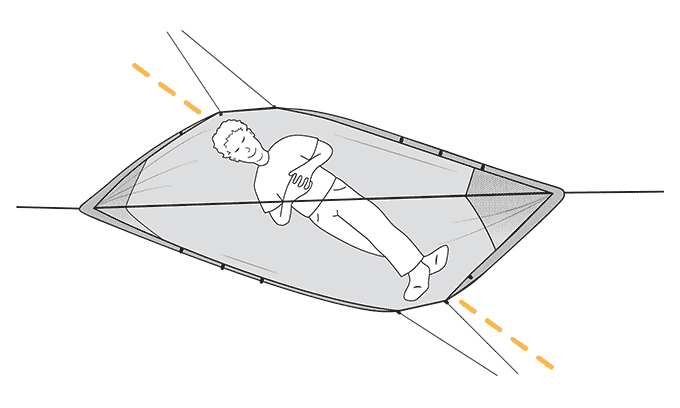
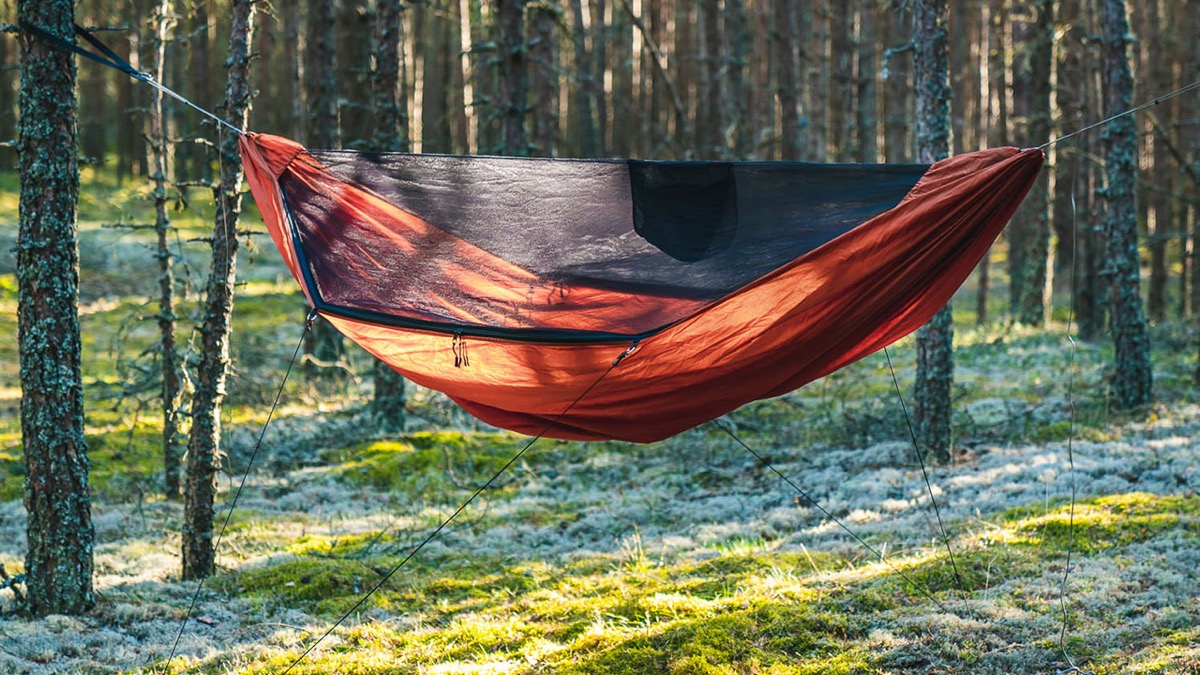
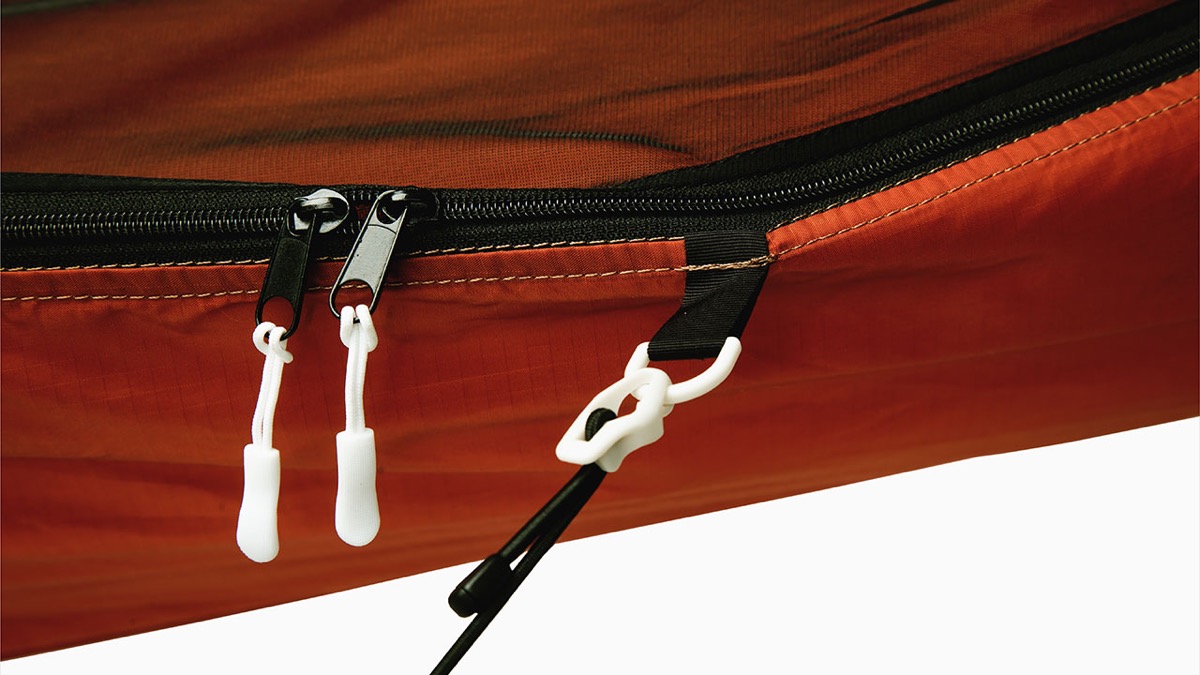
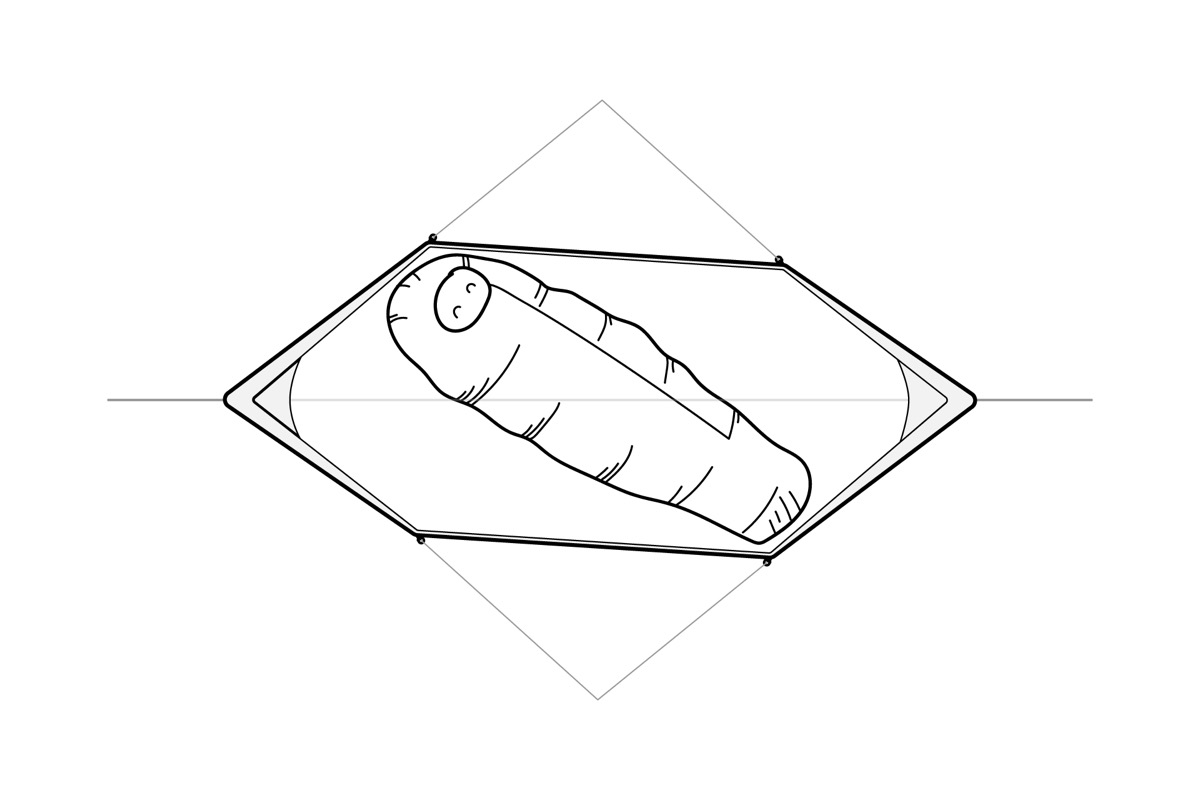
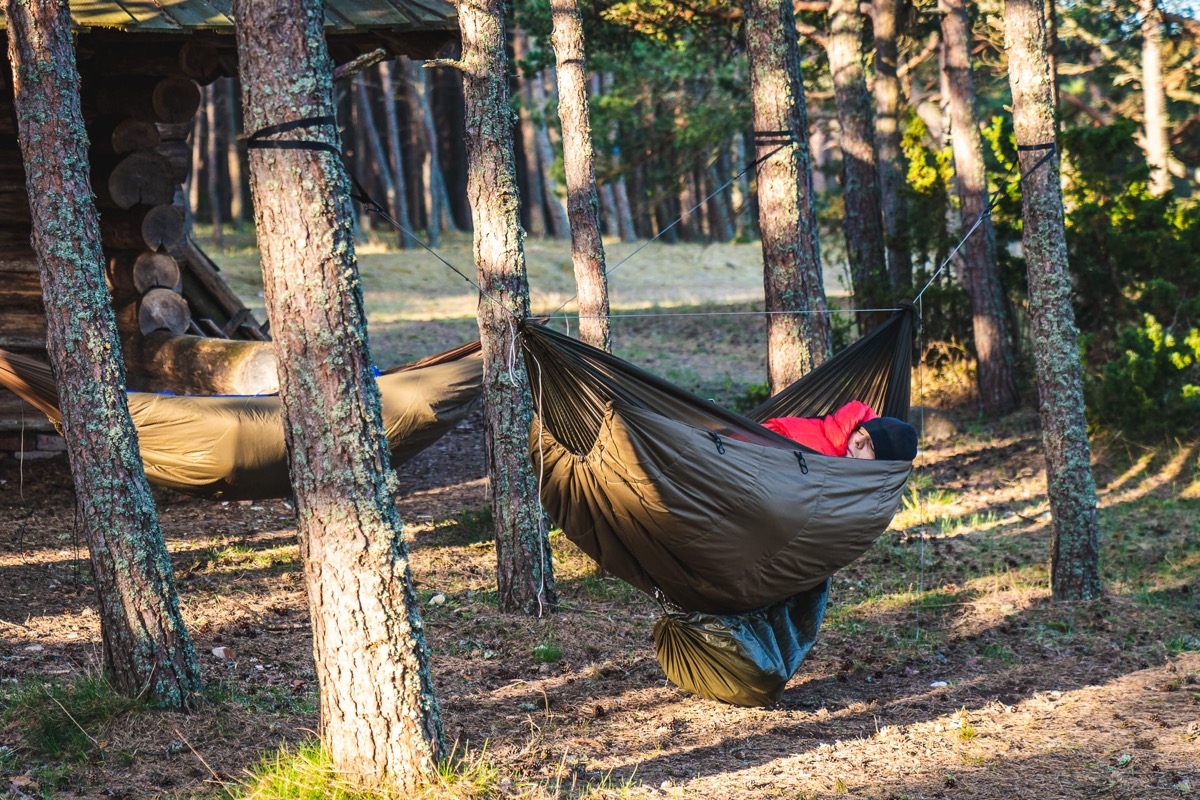
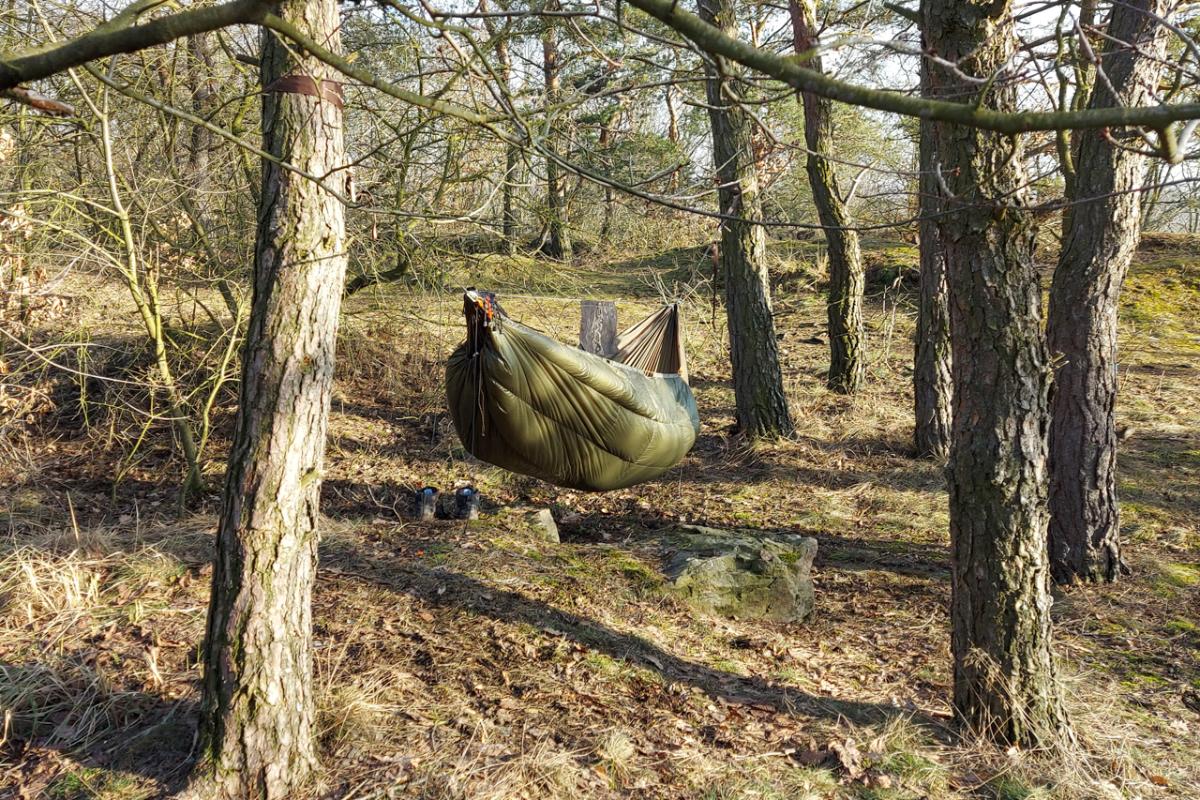
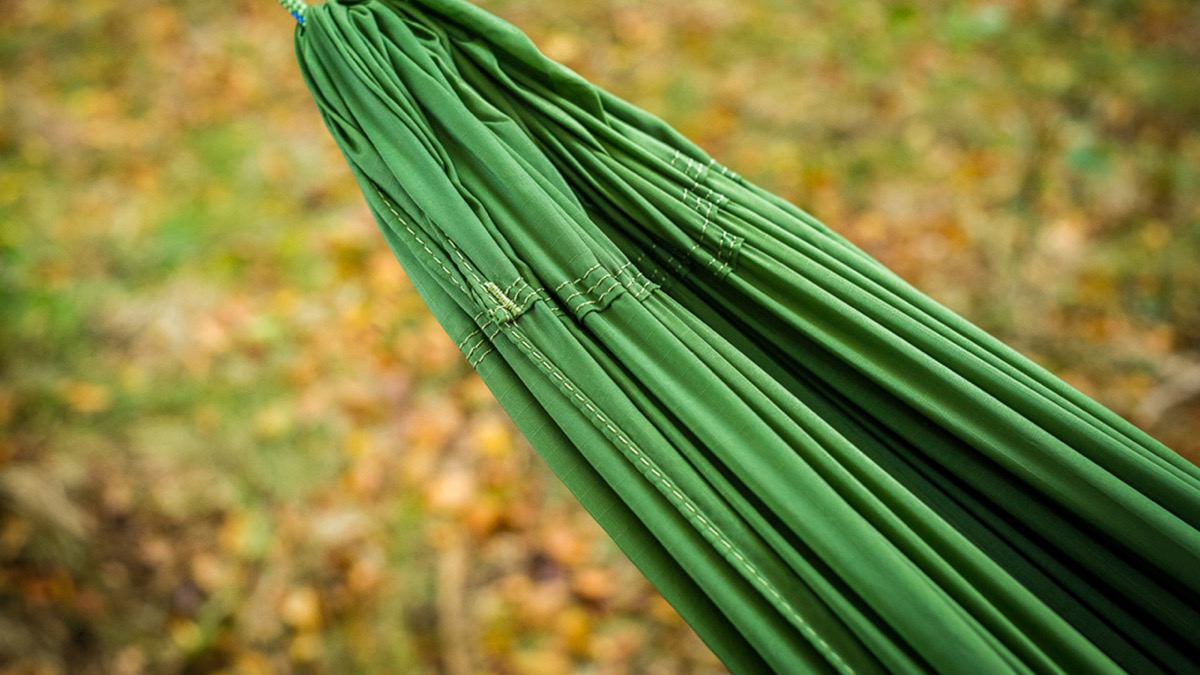
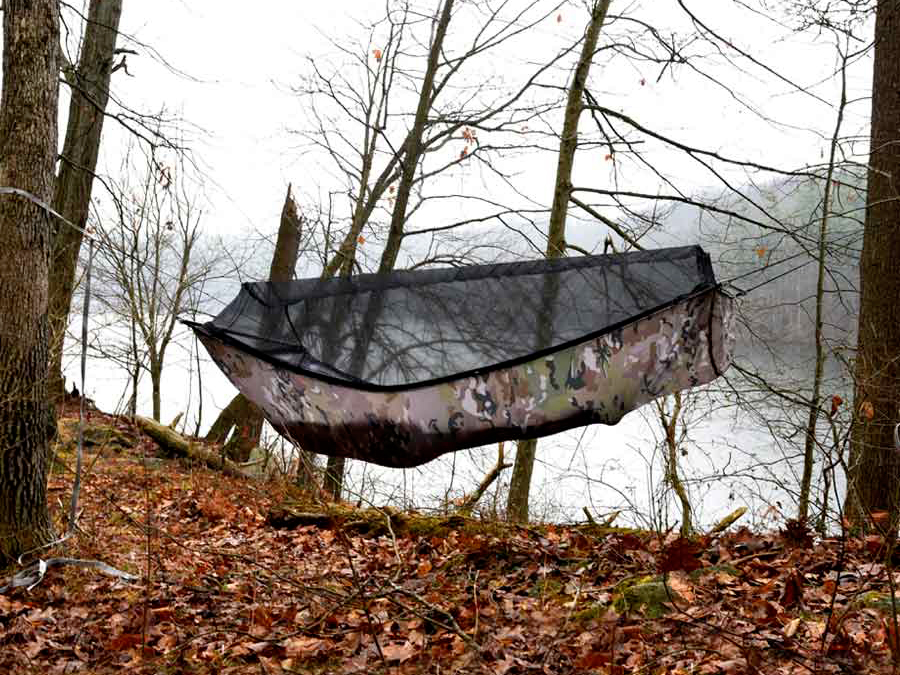
So Lesovik or warbonnet xlc ?
Only the Draka hammock can match the Blackbird XLC in the Lesovik offer. The problem is that they are different hammocks. Blackbird is asymmetrical, Draka is symmetrical. Lesovik doesn’t offer an asymmetrical model. I currently own both hammocks for a while and if I were to start comparing, the Draka is definitely better made and very comfortable for someone who wiggles a lot. On the other hand, someone who is used to not wiggling much and likes more or less one position will be perfectly suited to the Blackbird XLC. Likewise, this American hammock will suit anyone who requires a lot of variability in adapting to natural conditions. Accessories like TopCover, UQ protector are not yet offered by Lesovik and in my opinion it is a great pity. It penalizes this hammock a lot compared to more variable hammocks. However, even in this situation there are solutions. For example, the wookie insulation and protector both fit perfectly on the Draka. You just don’t turn on the protector because the two hammocks have different zippers. Both reviews appear here on the portal. Please bear with me and I am very sorry for the late response. I didn’t notice your post.